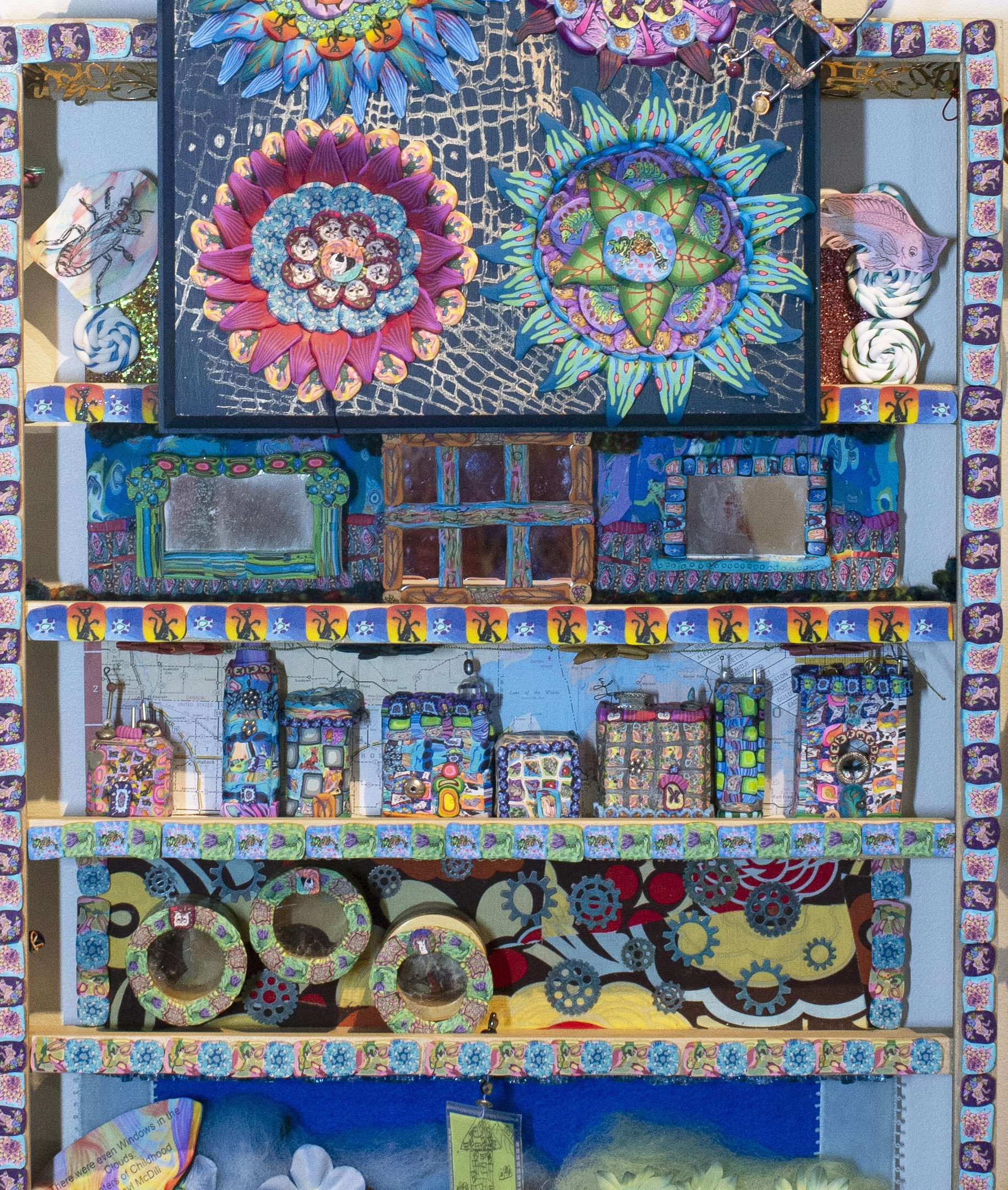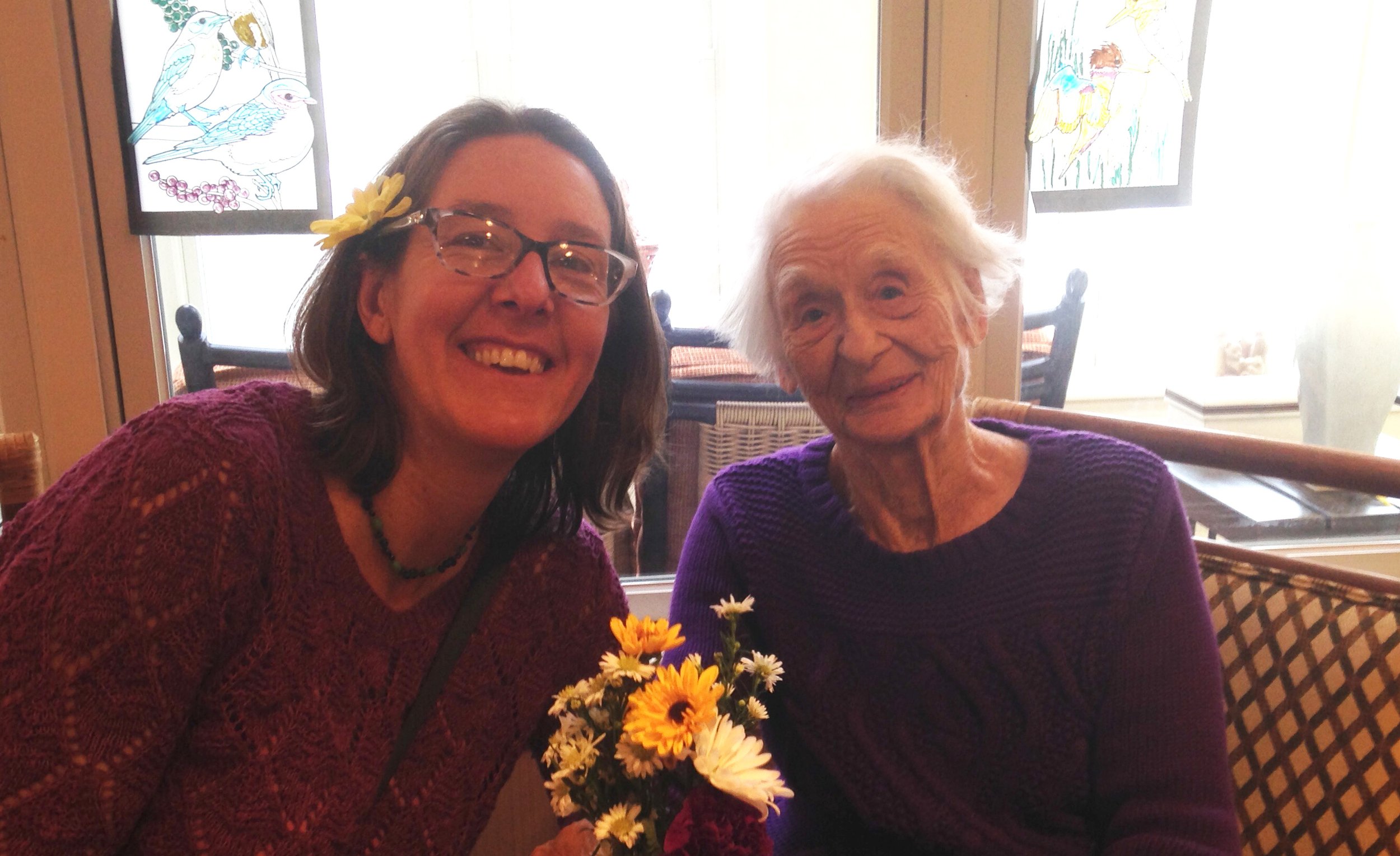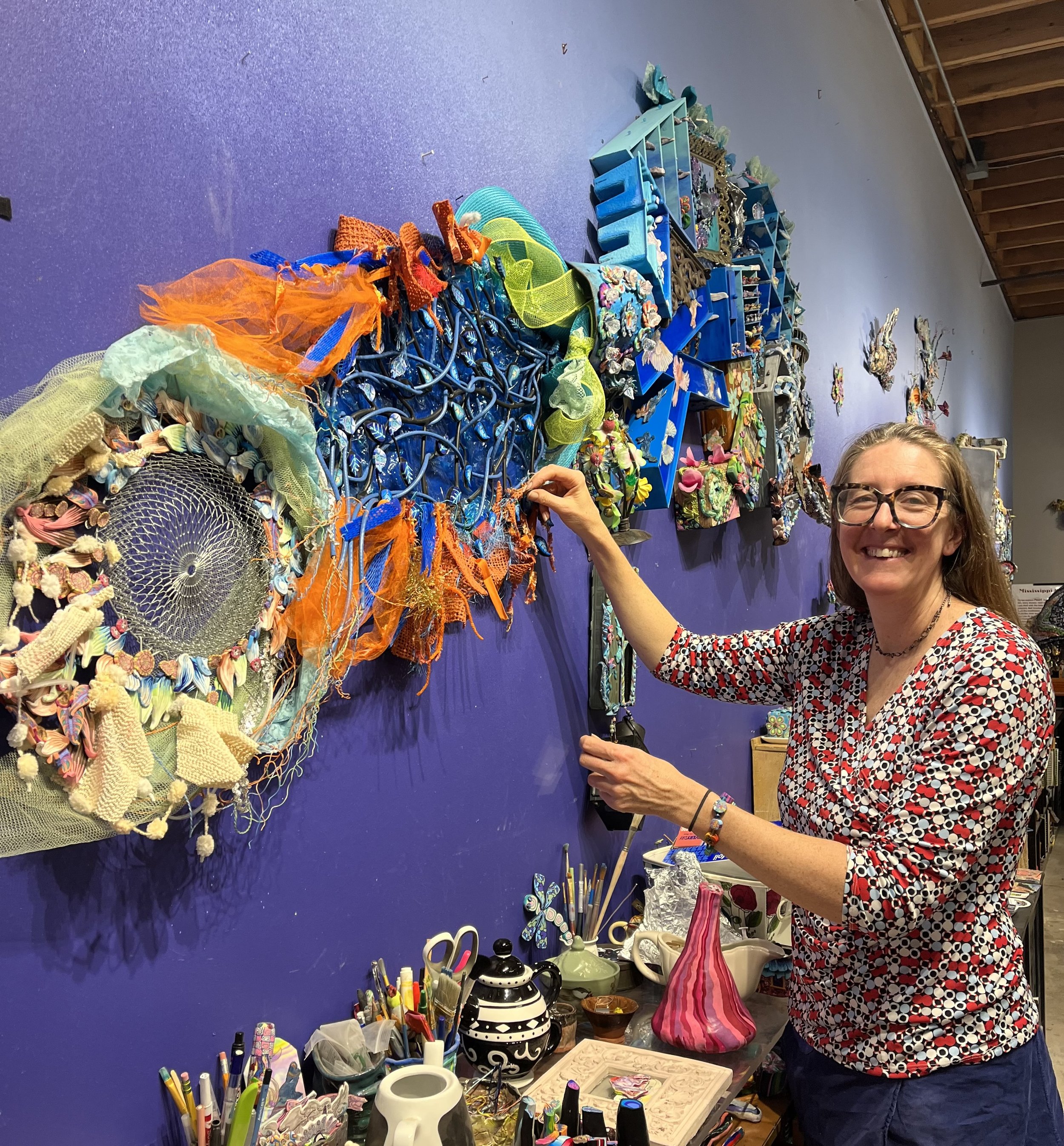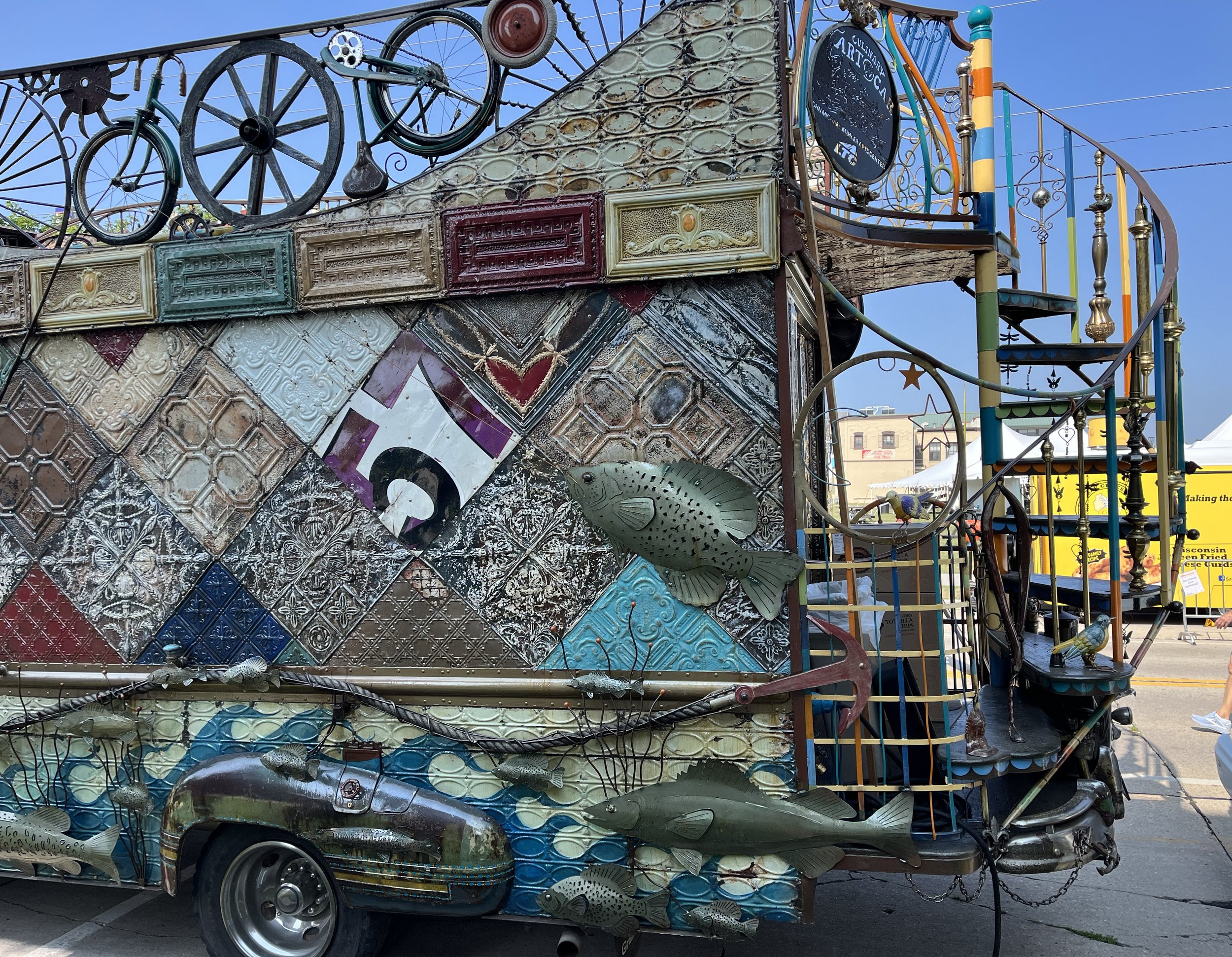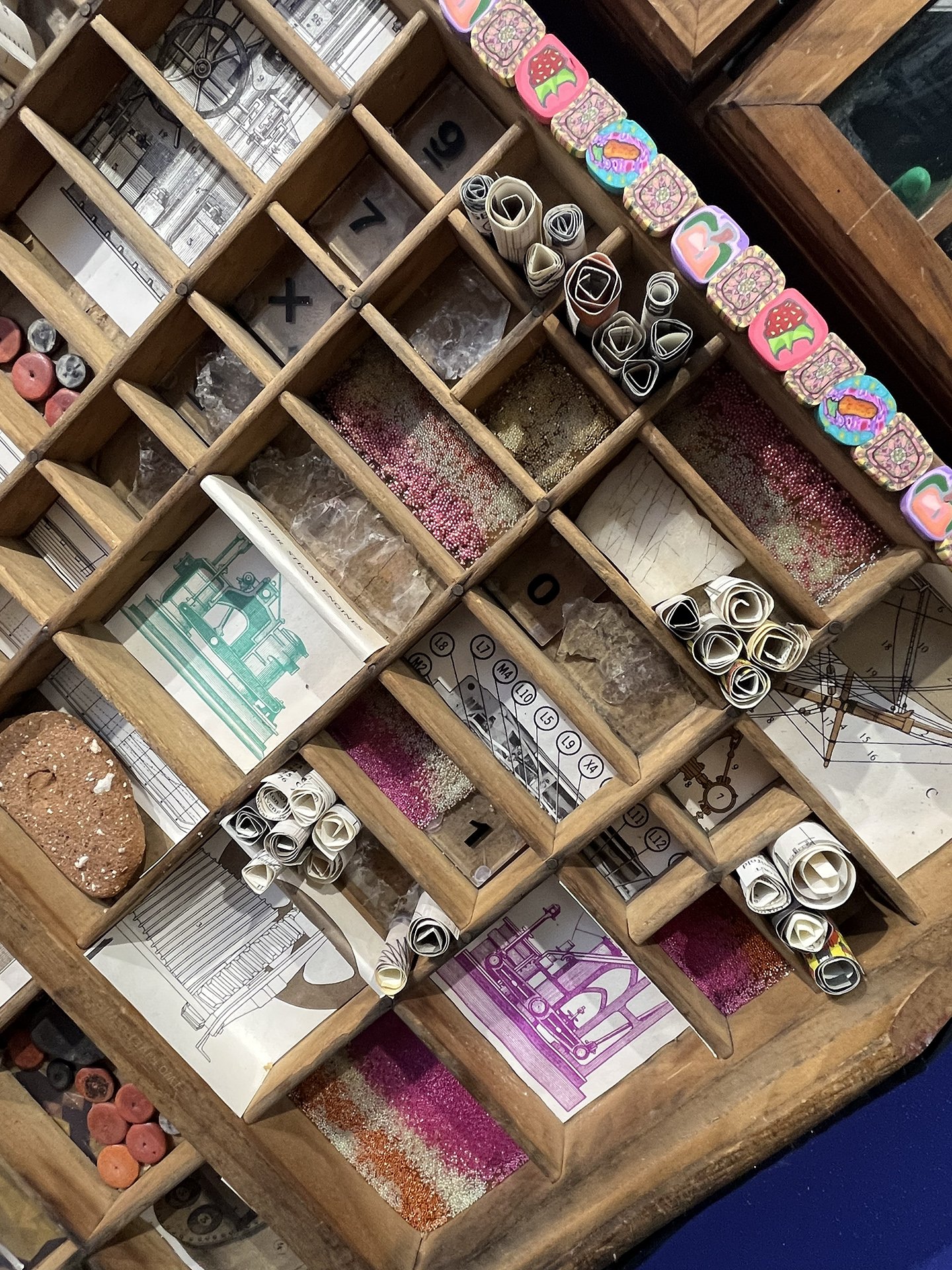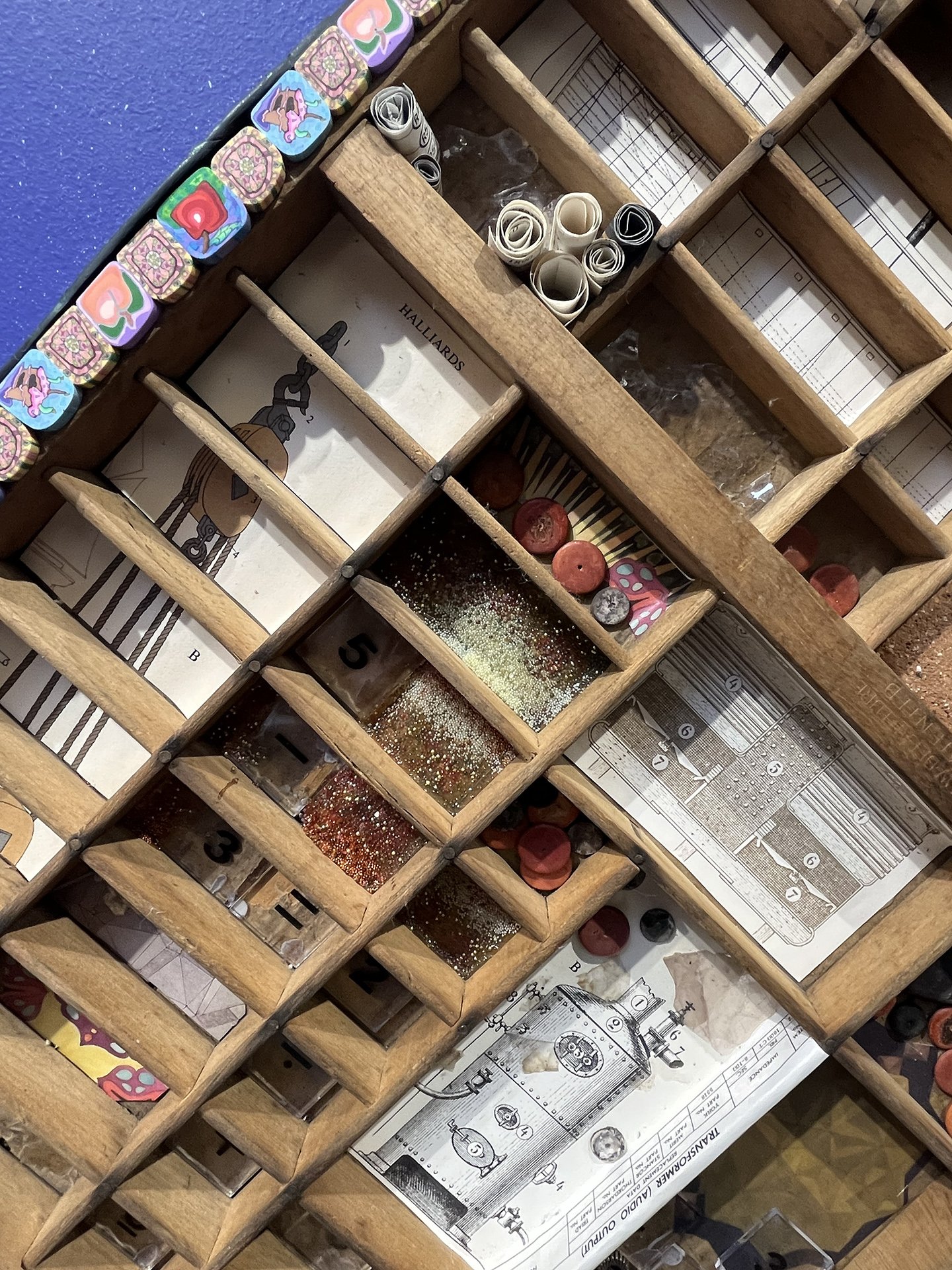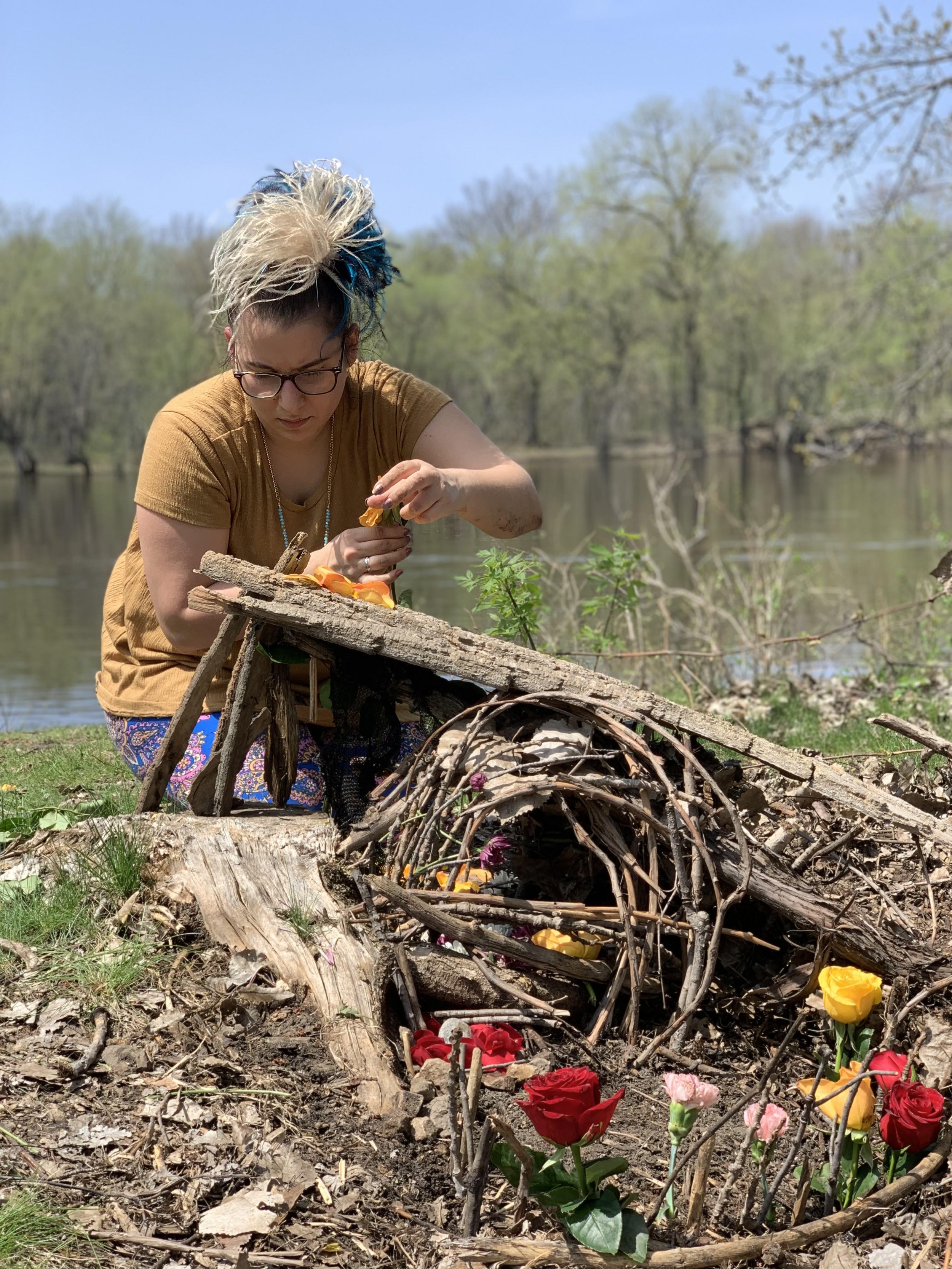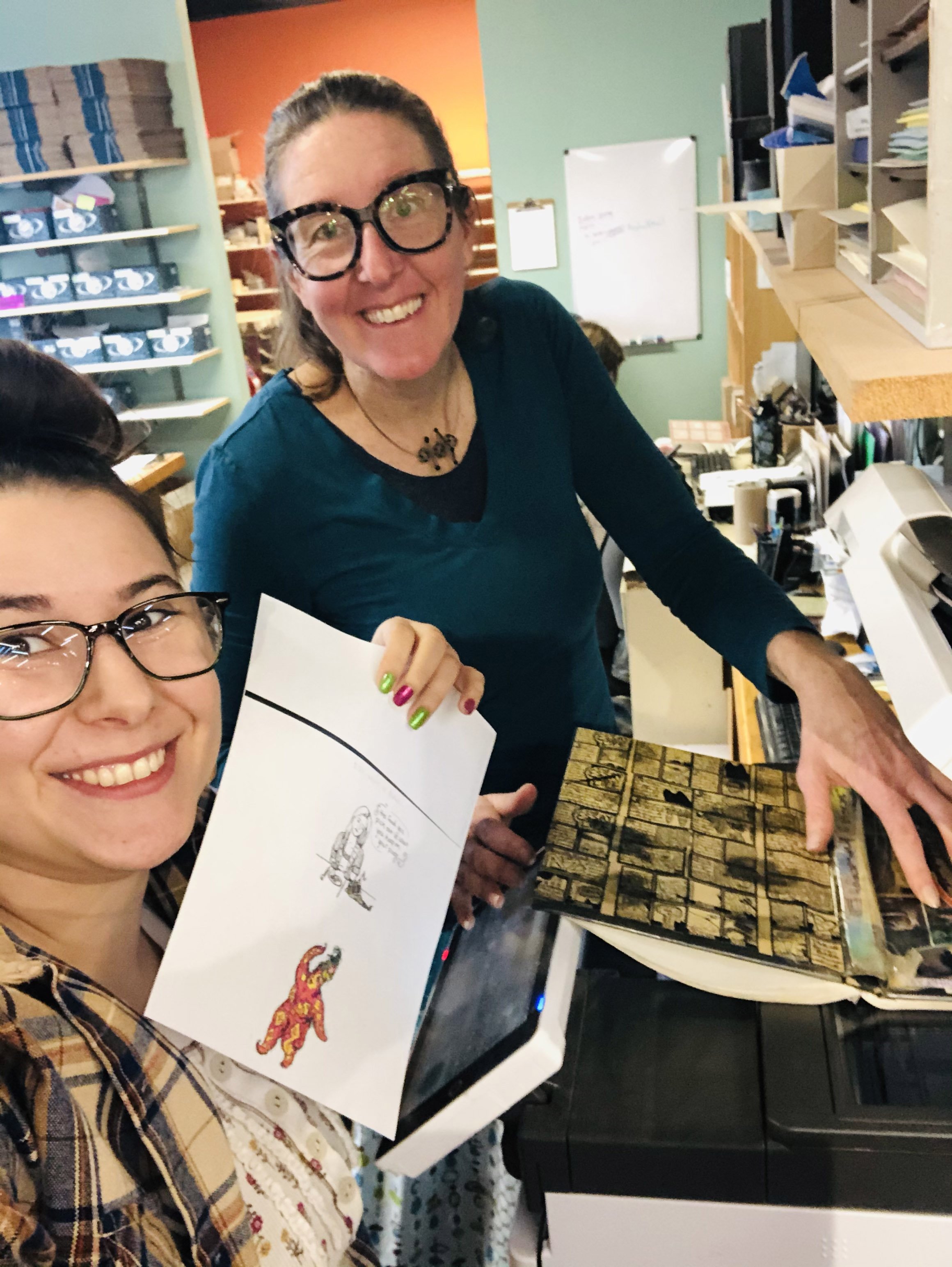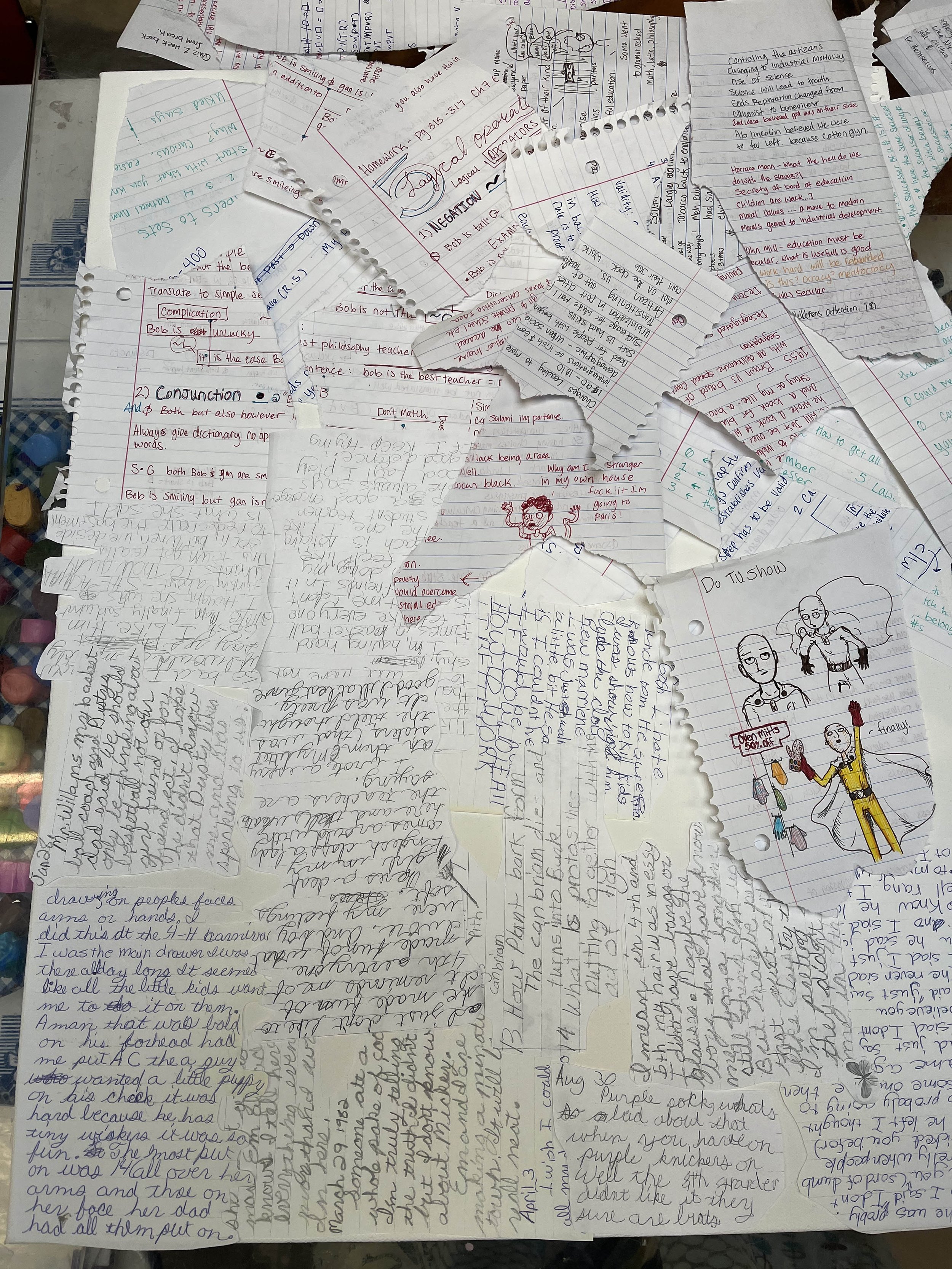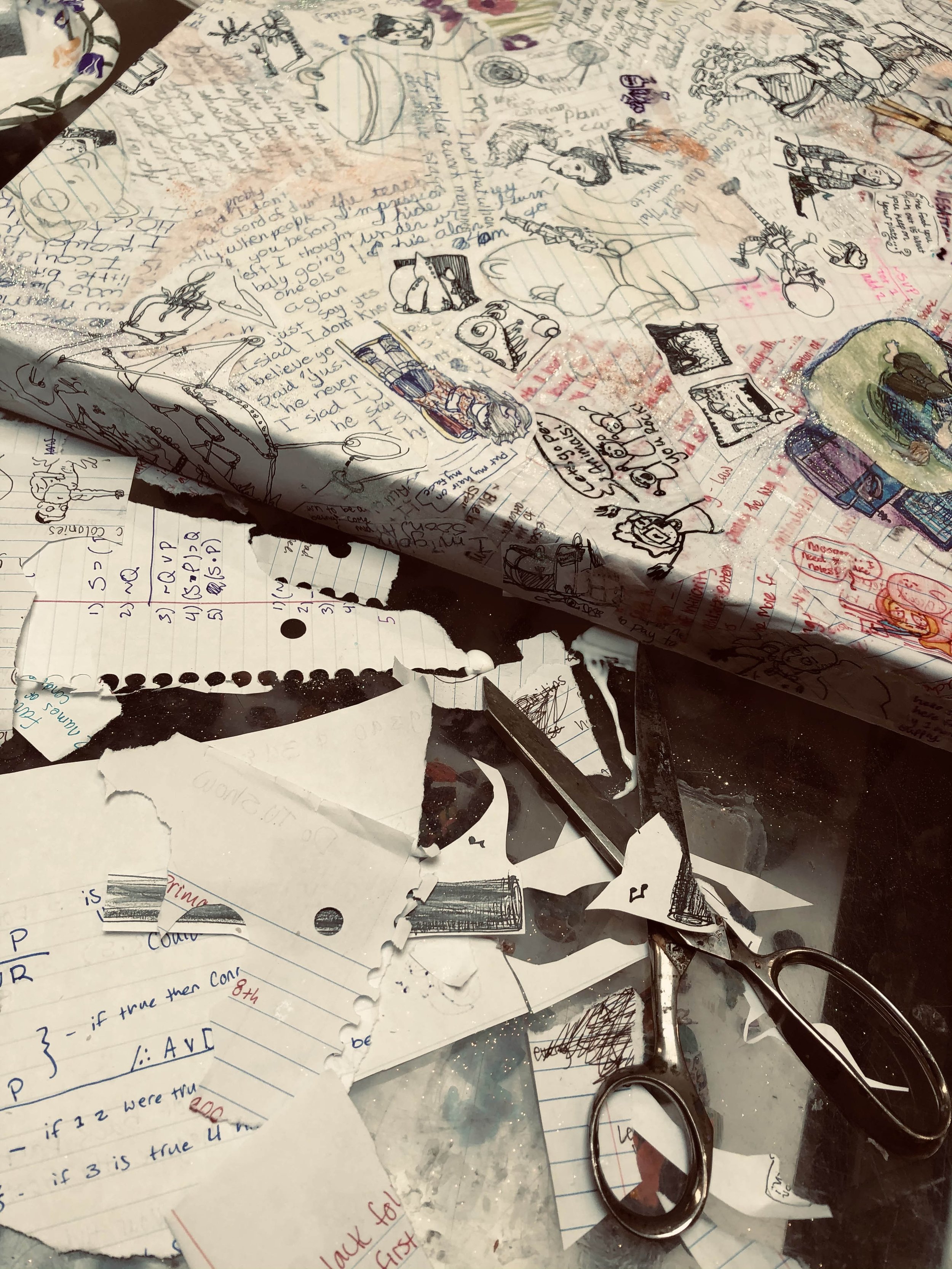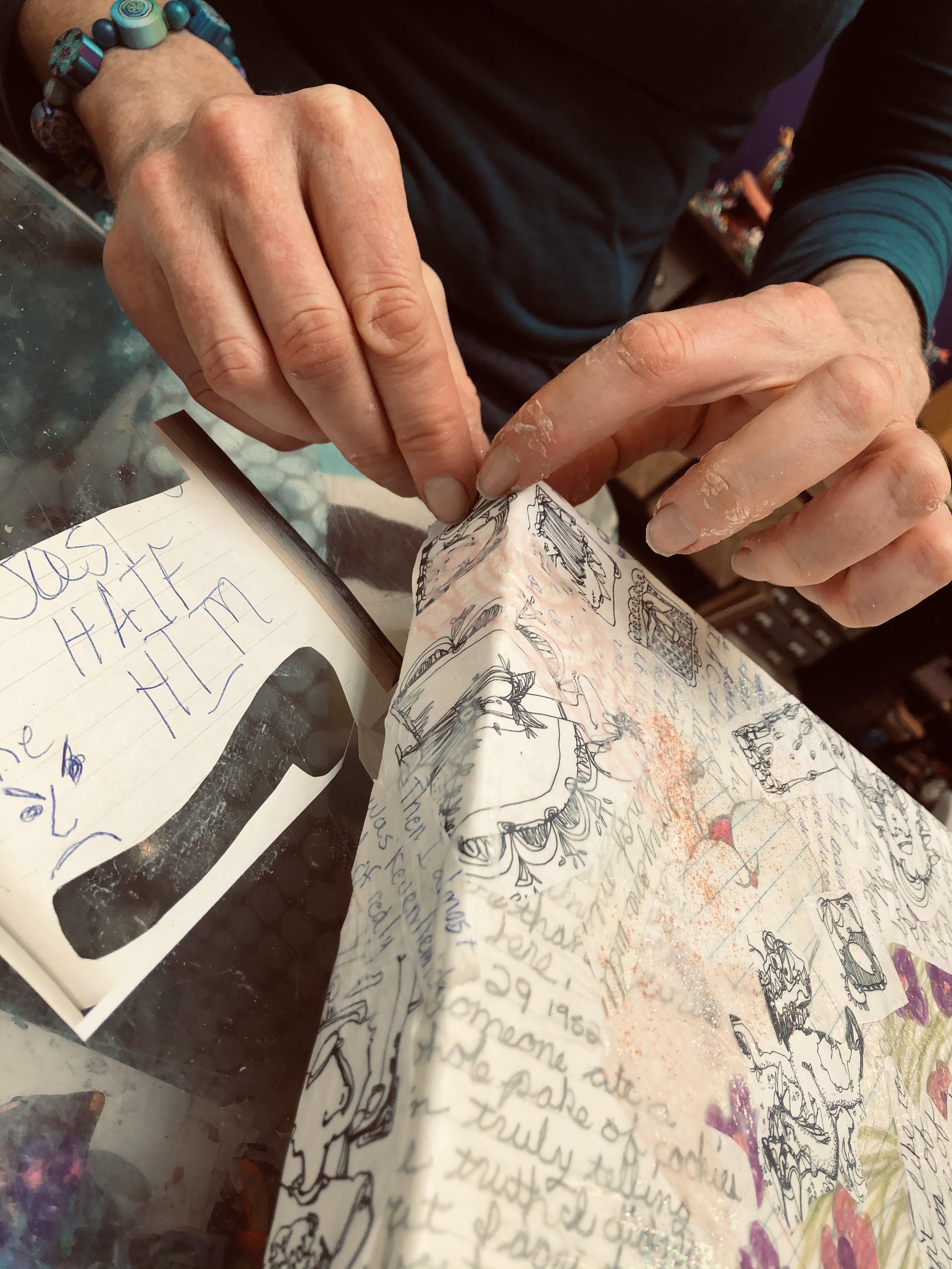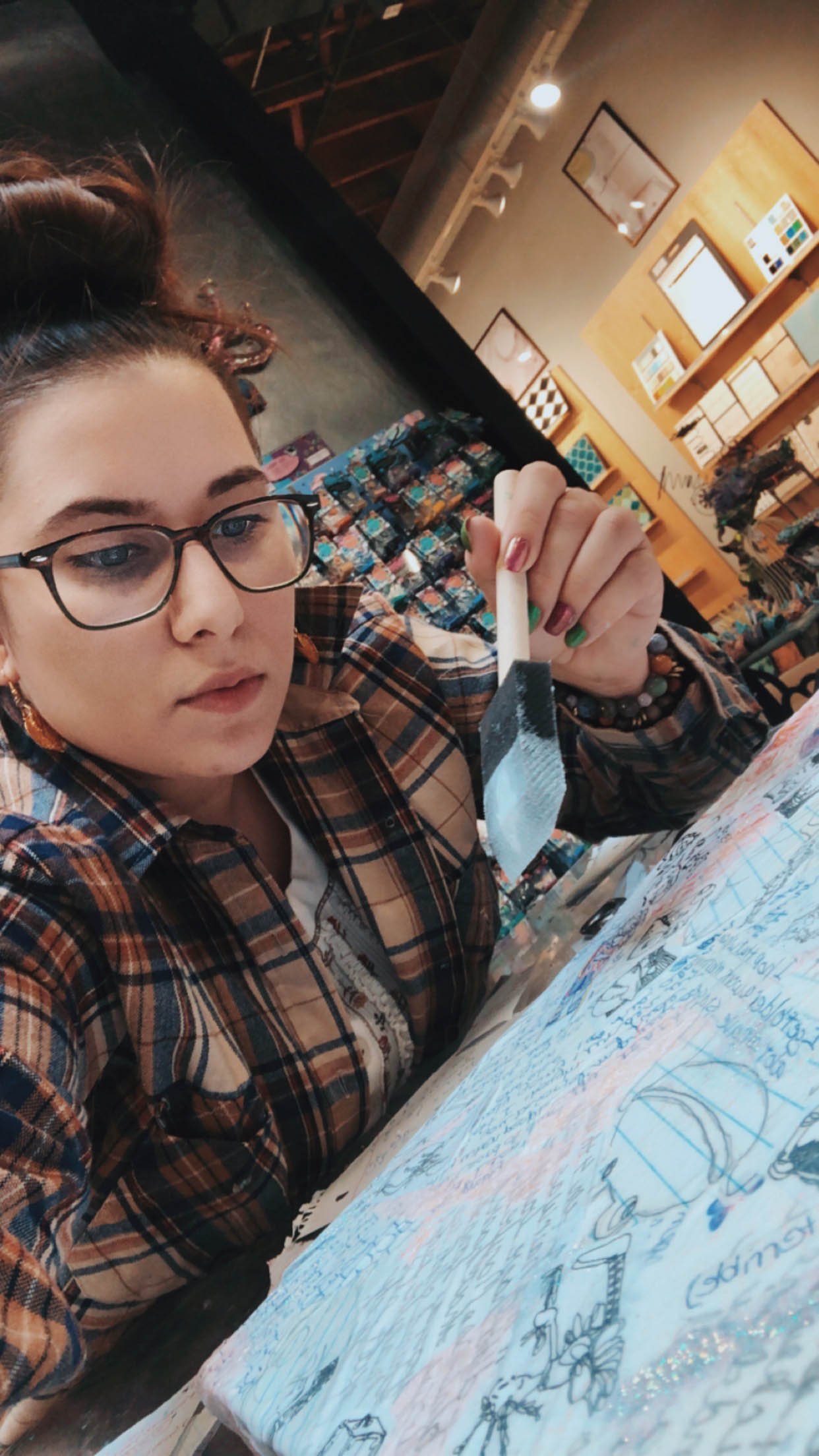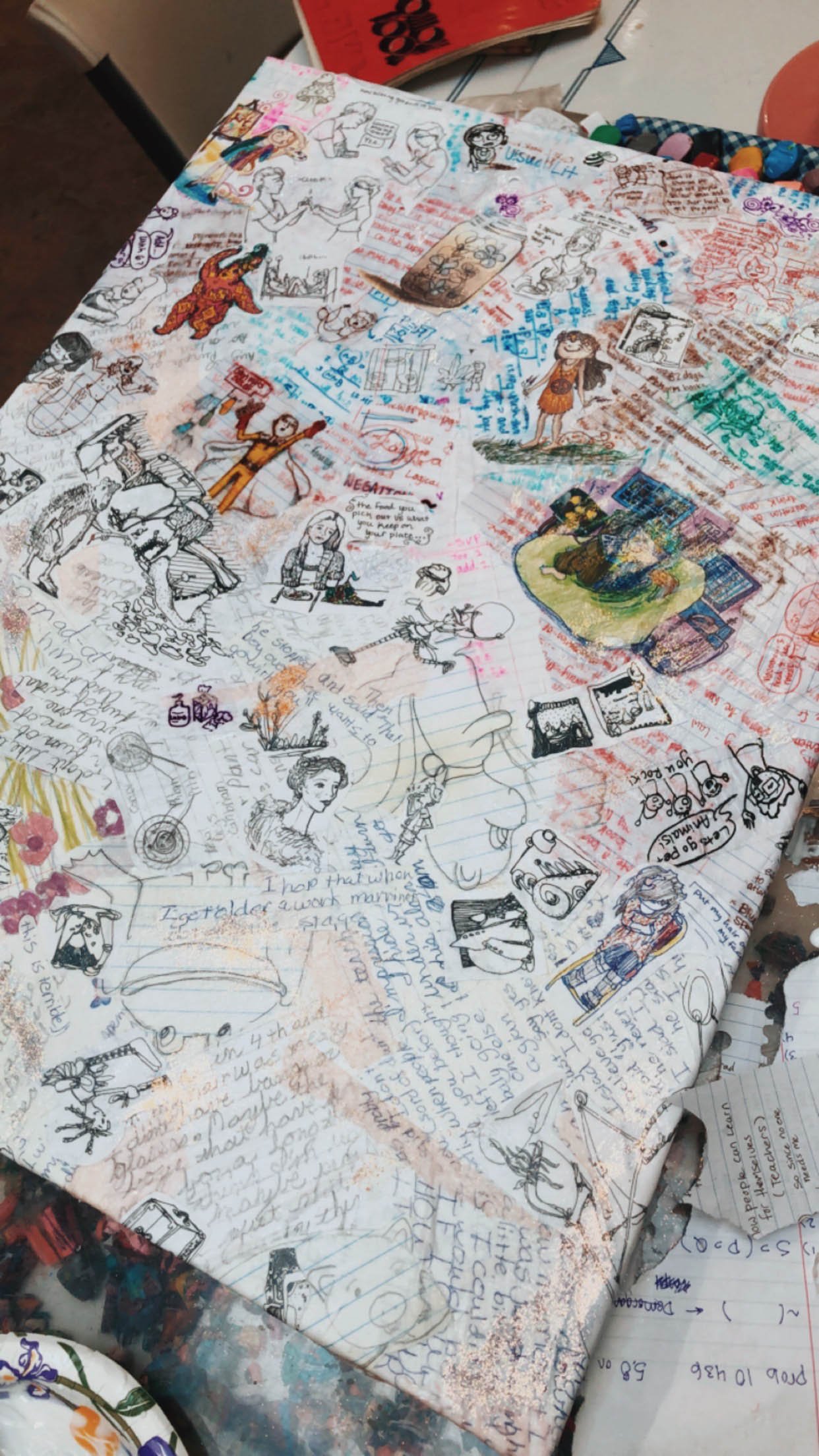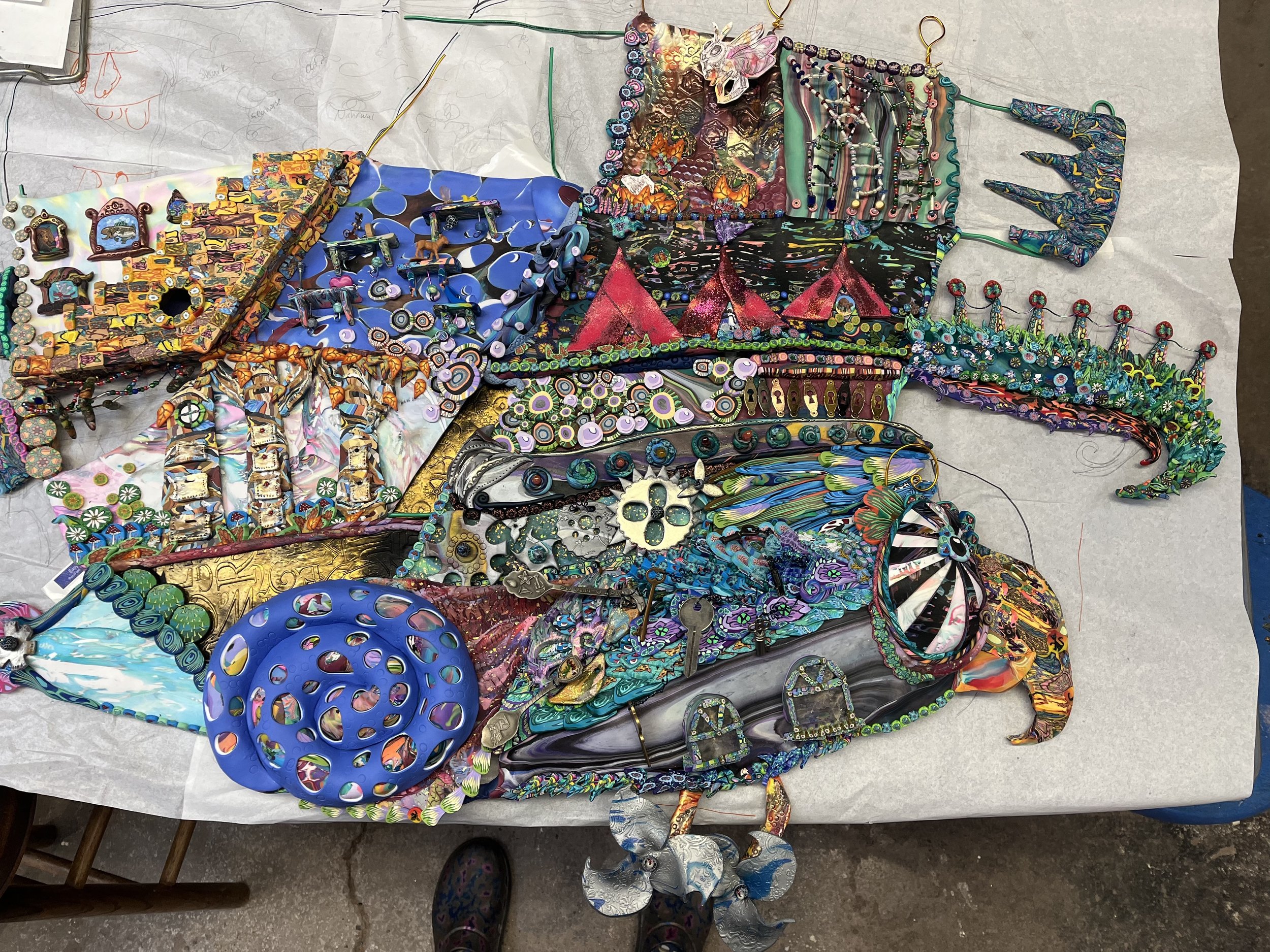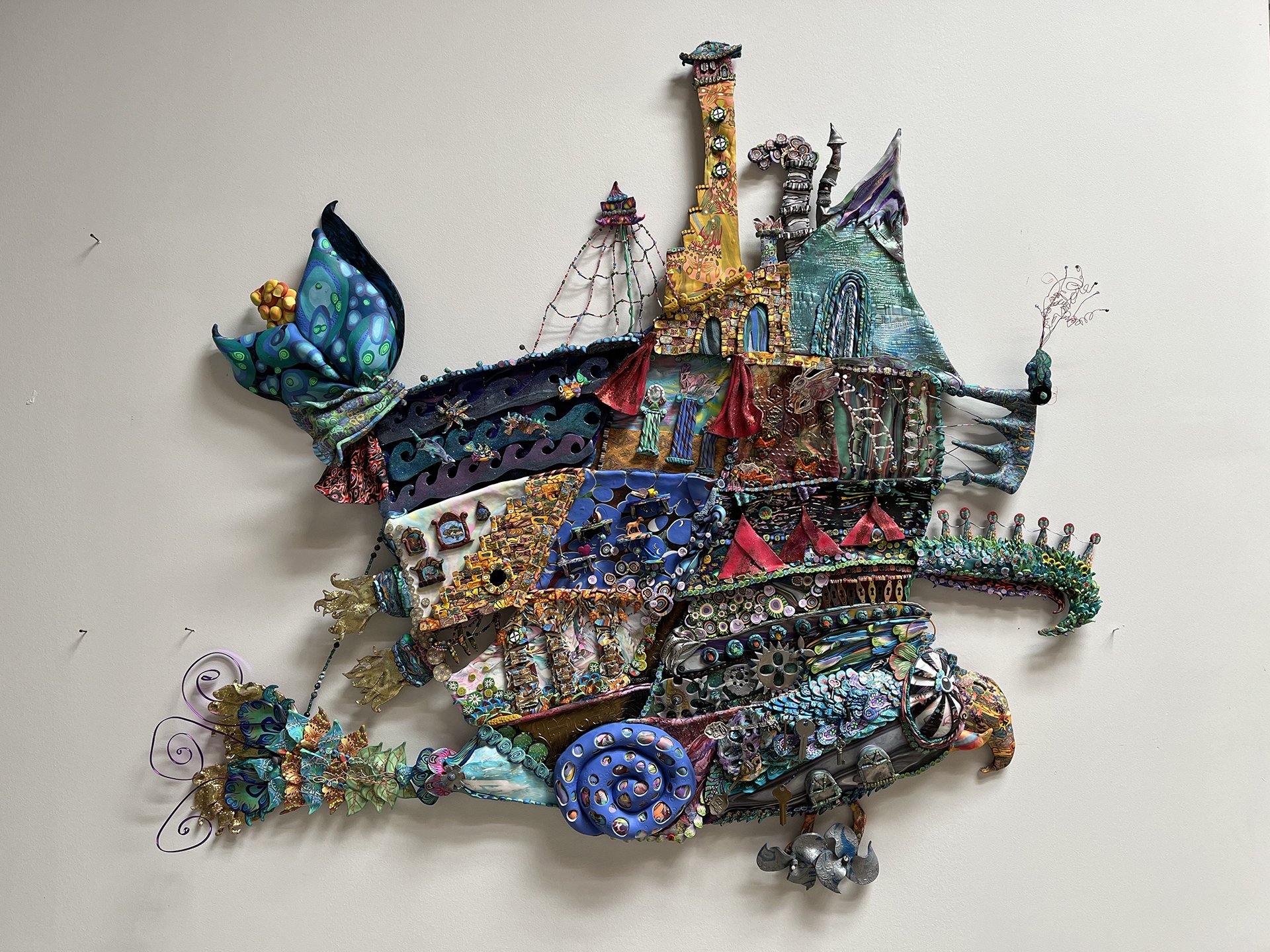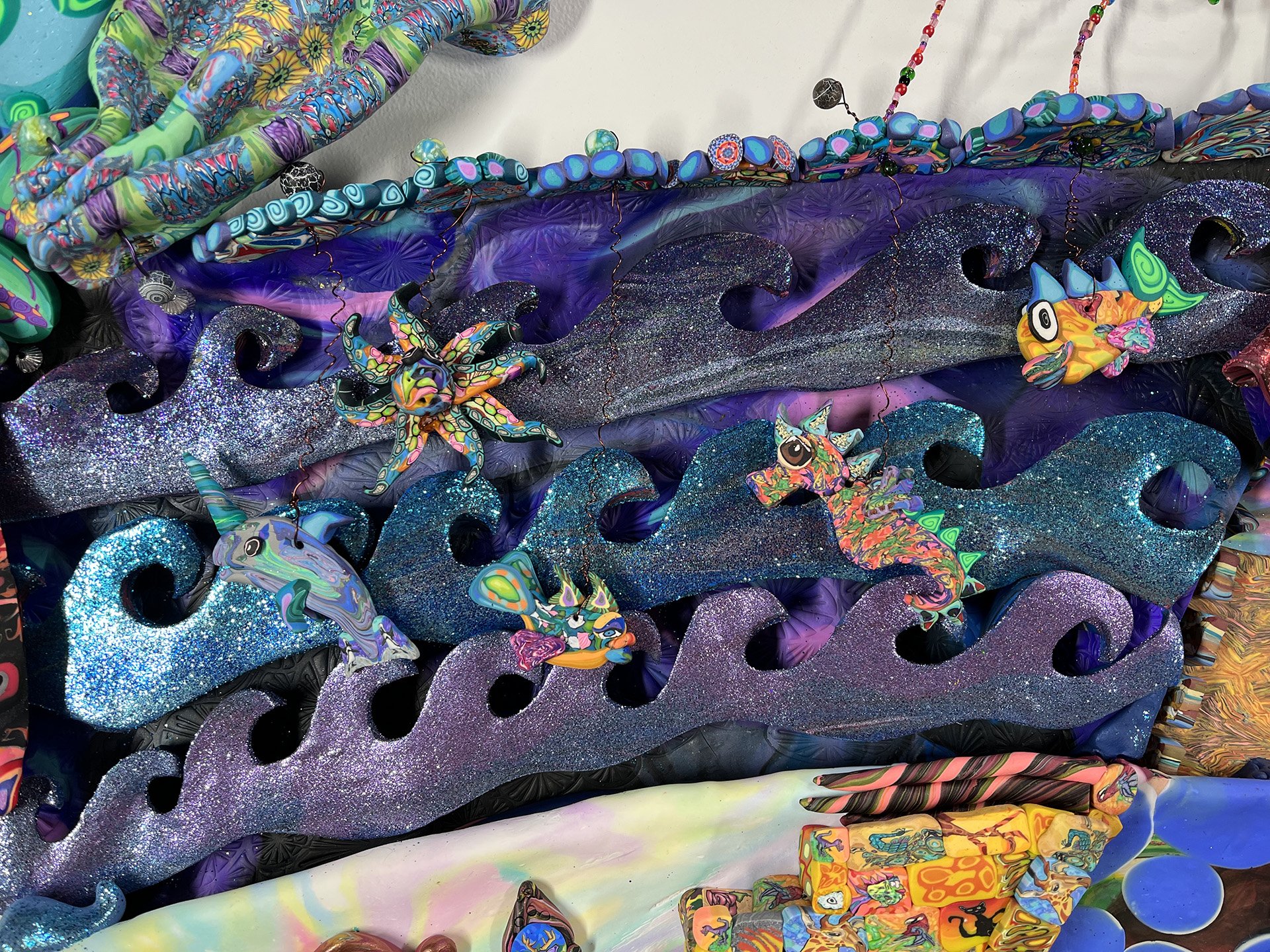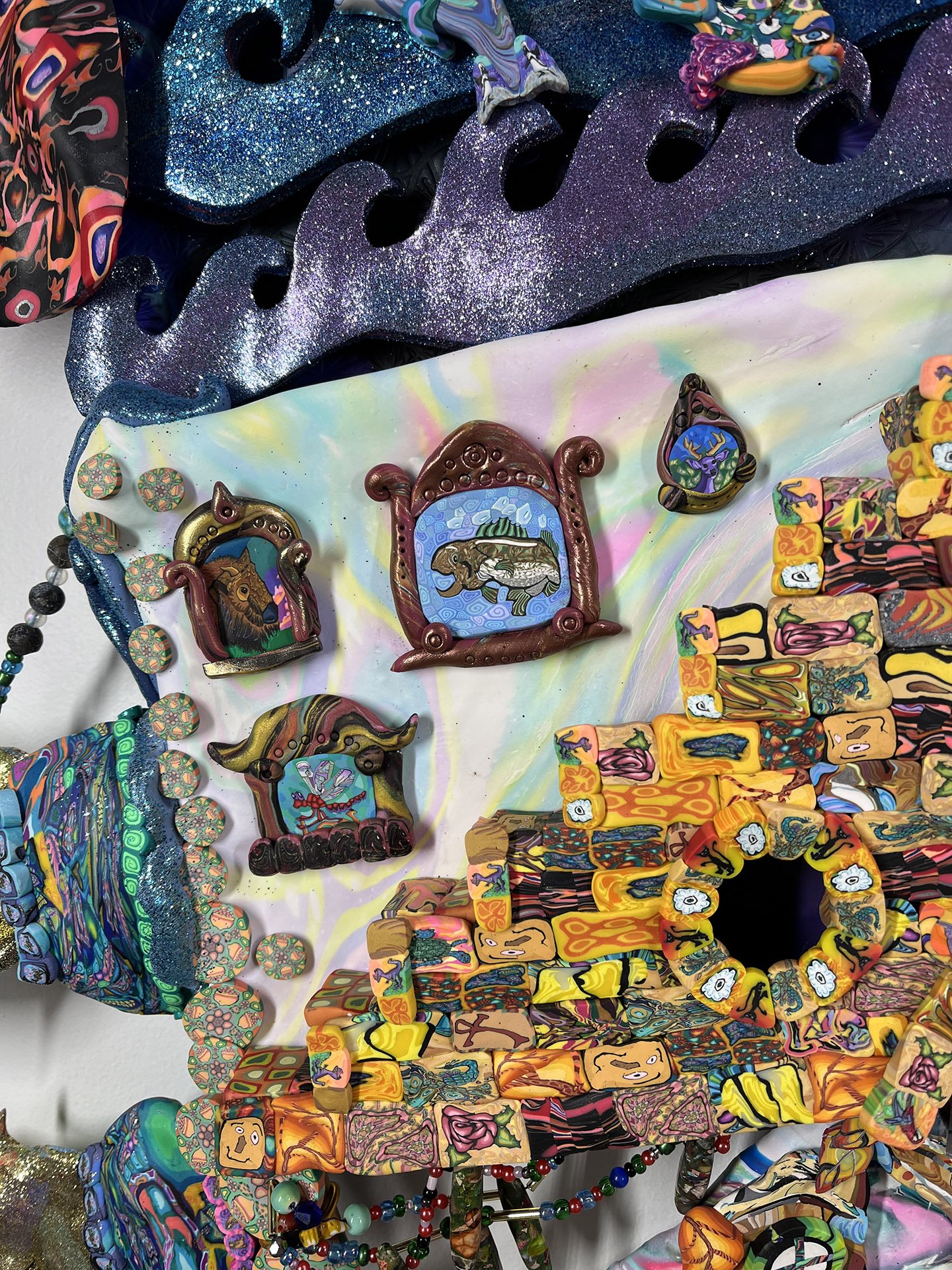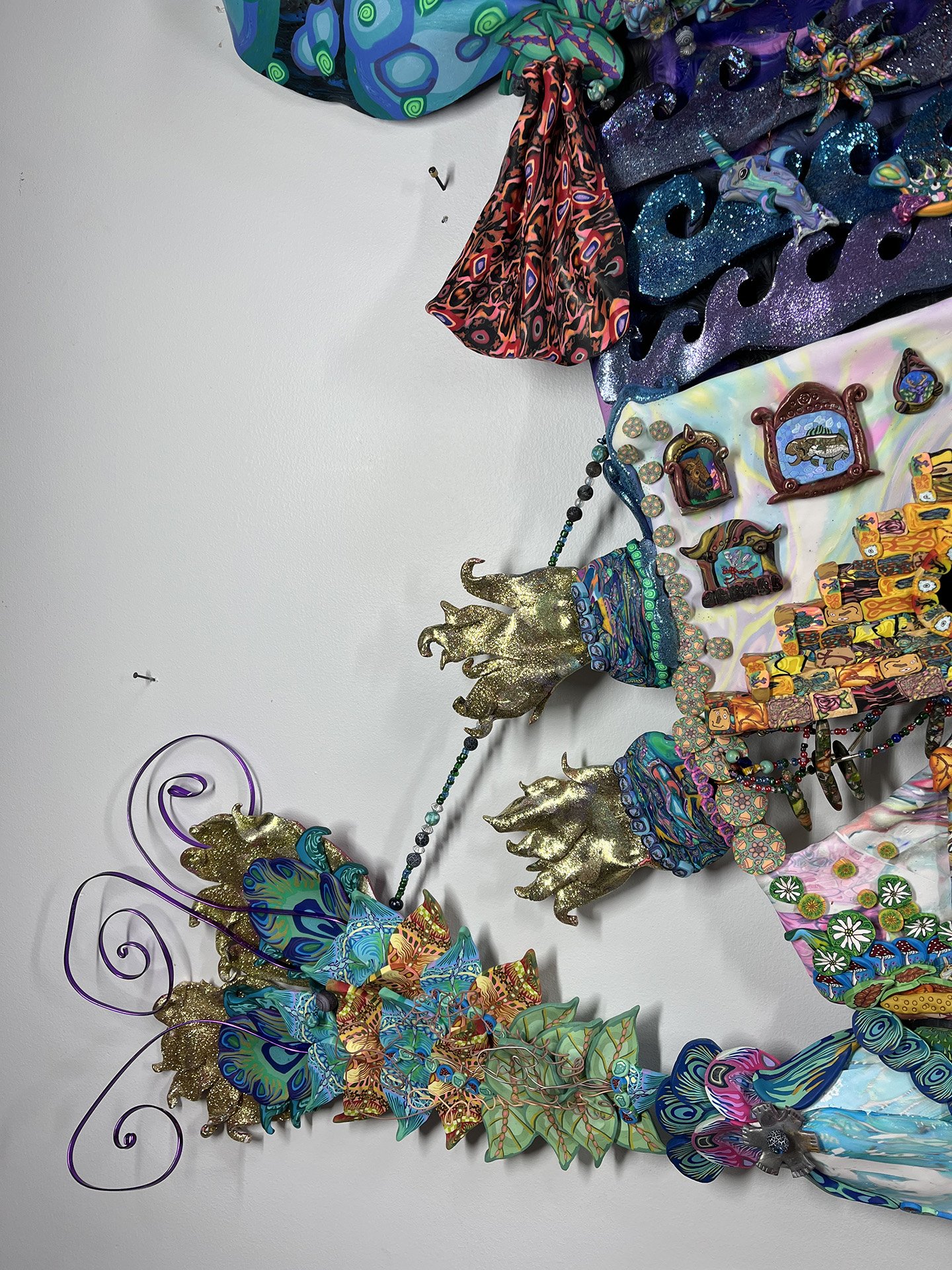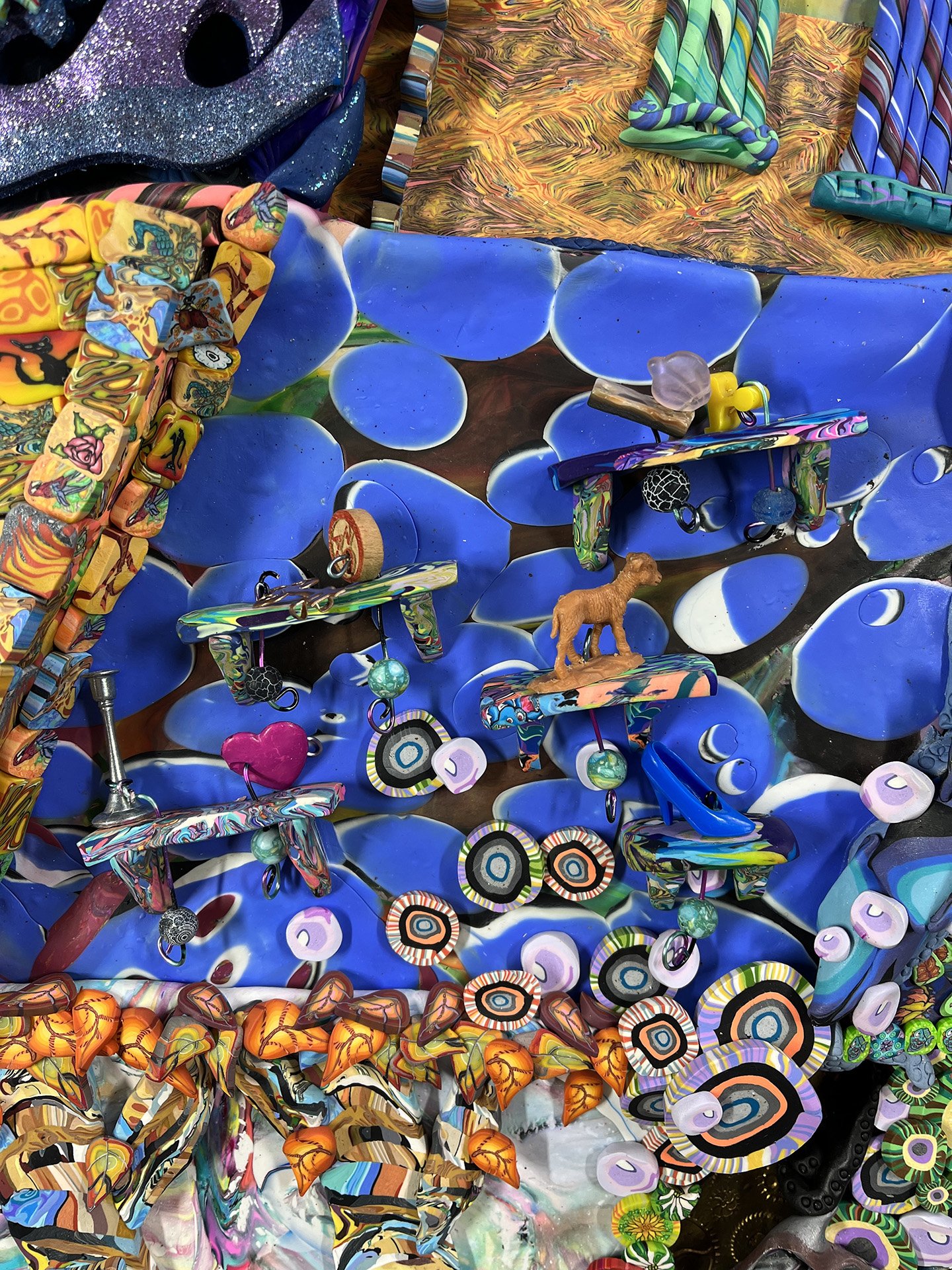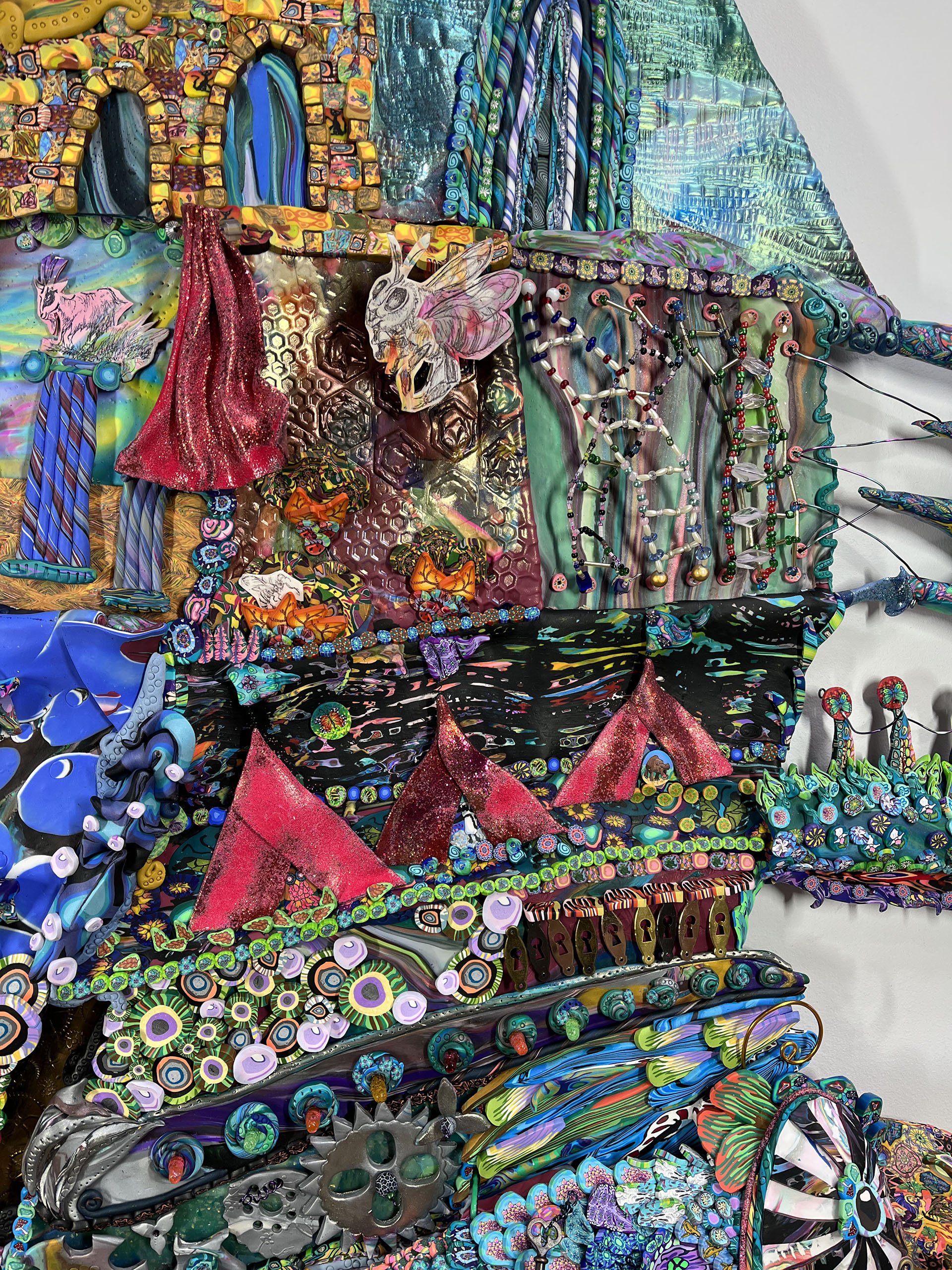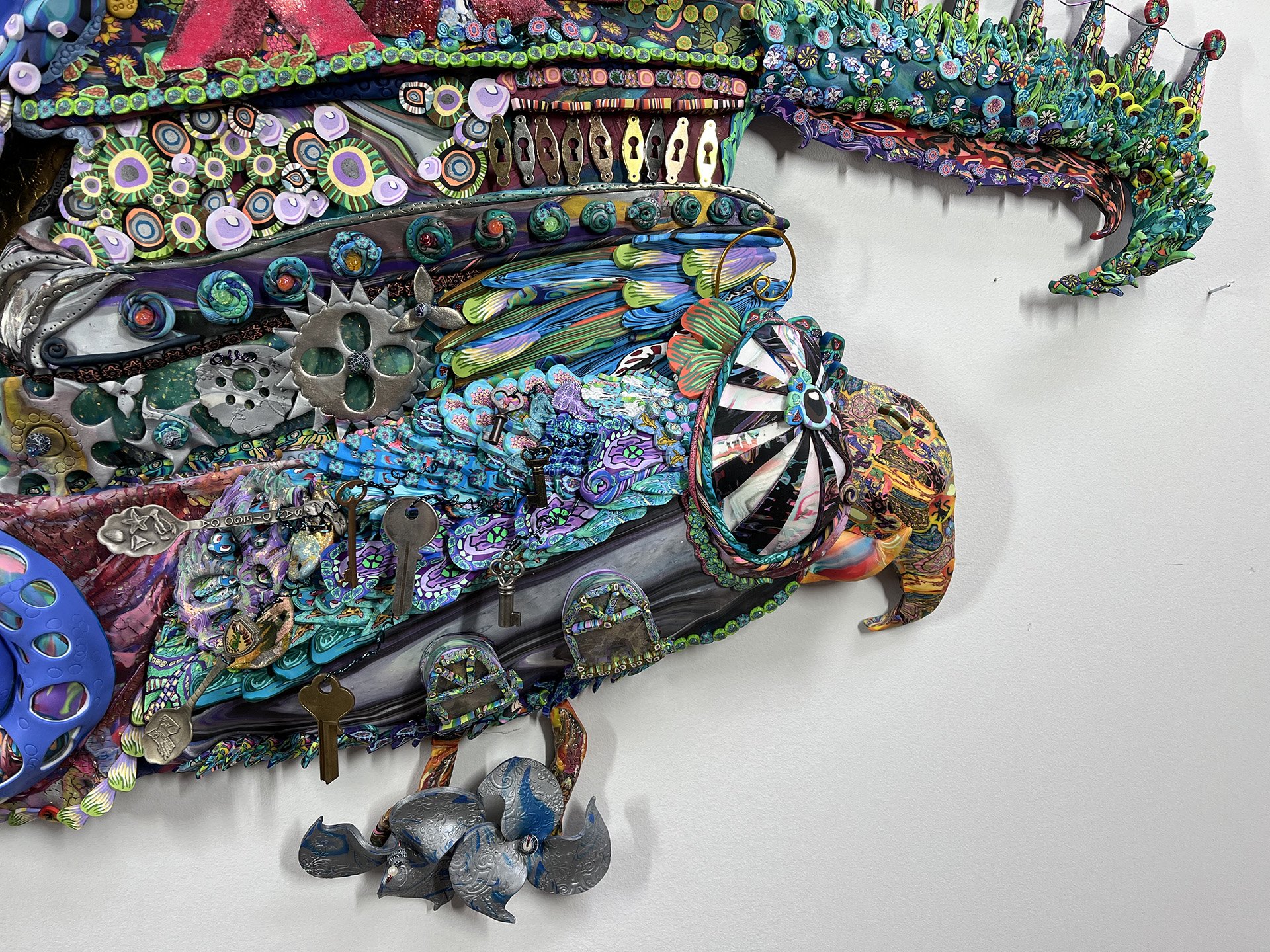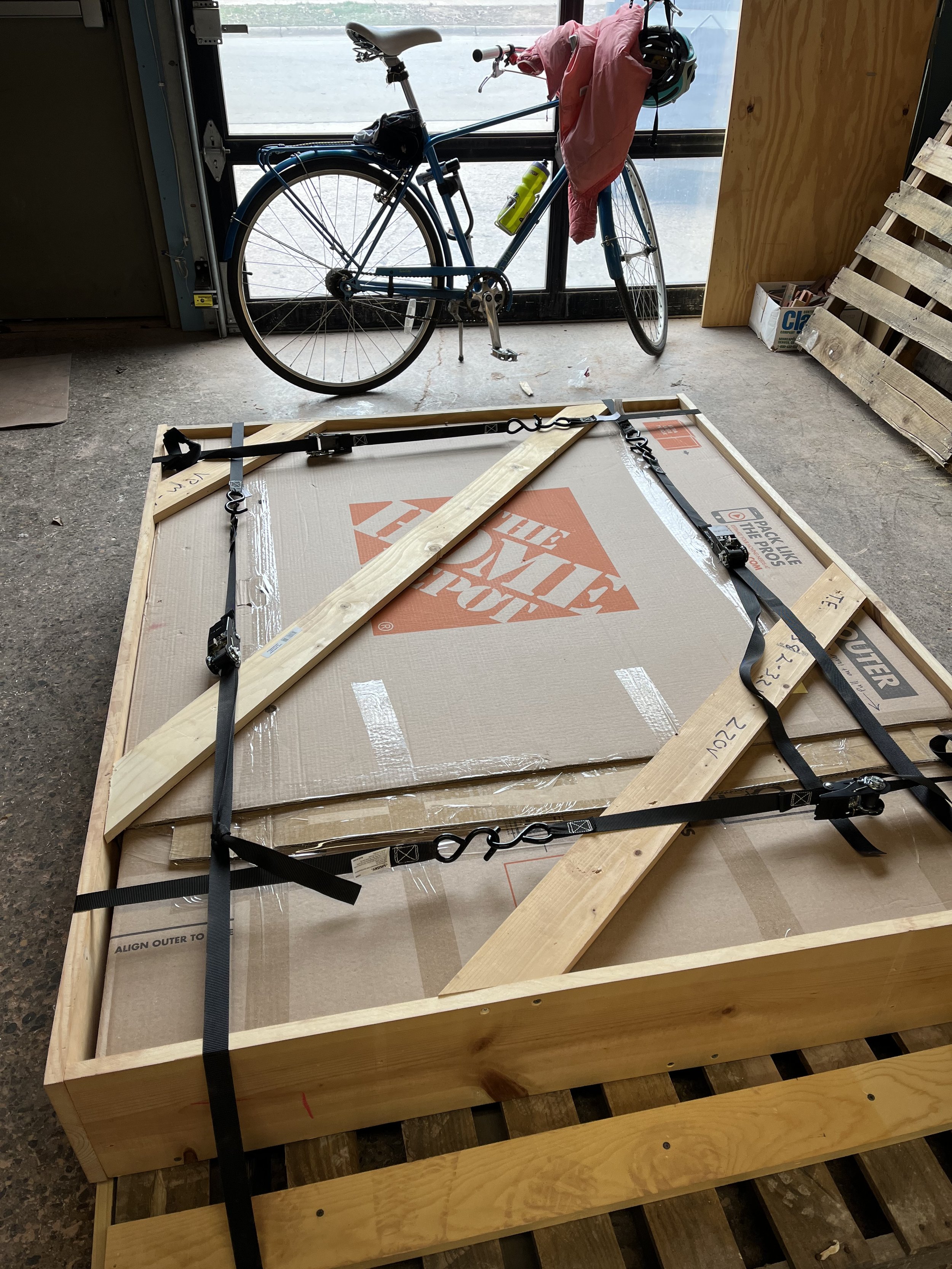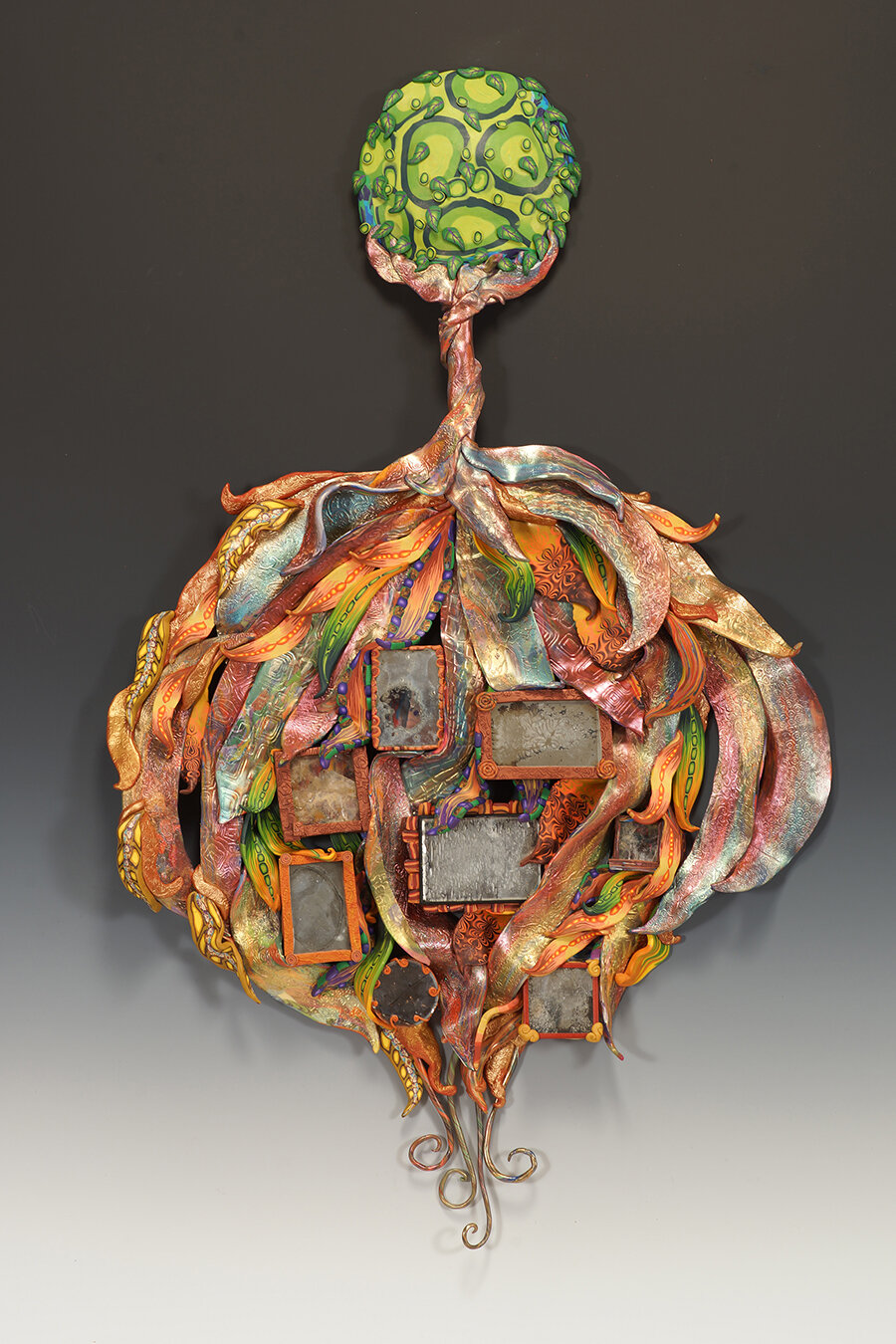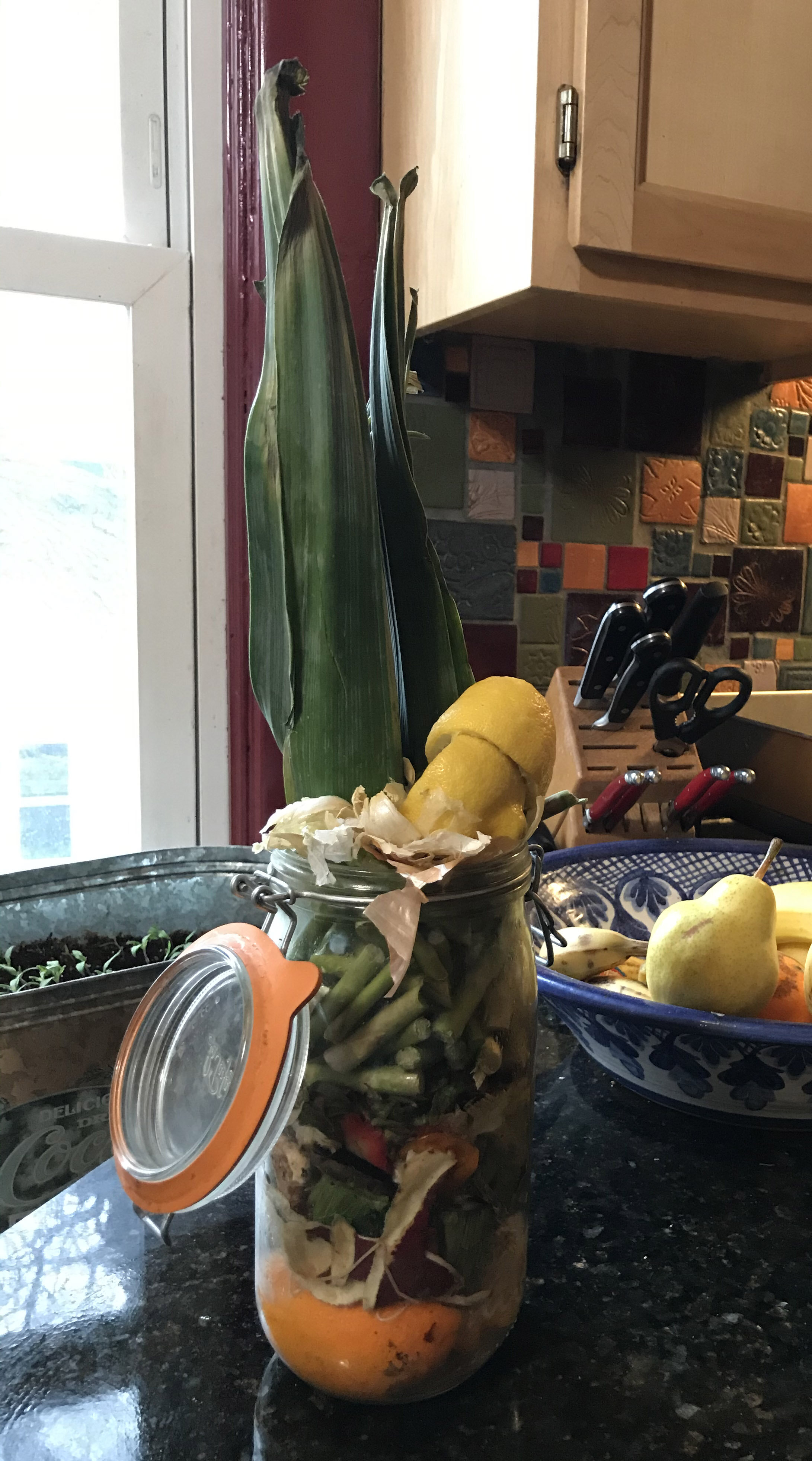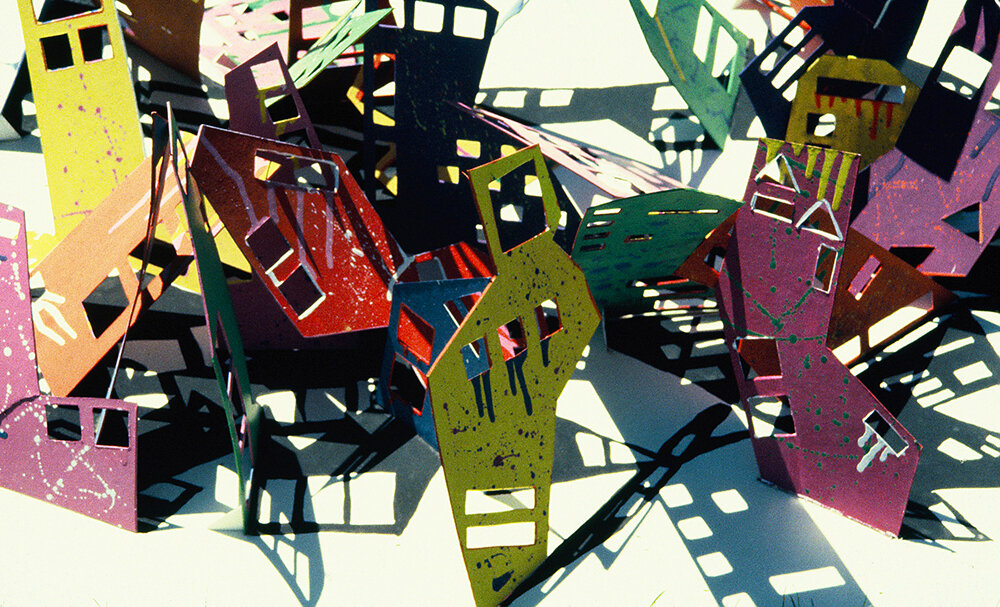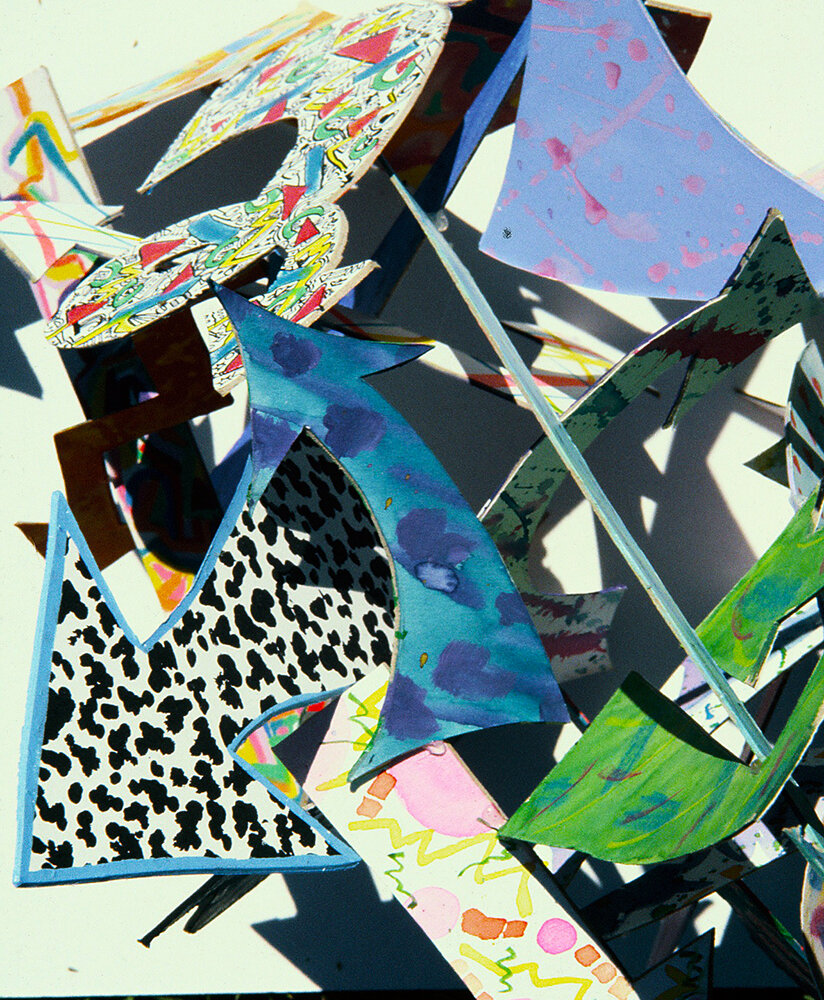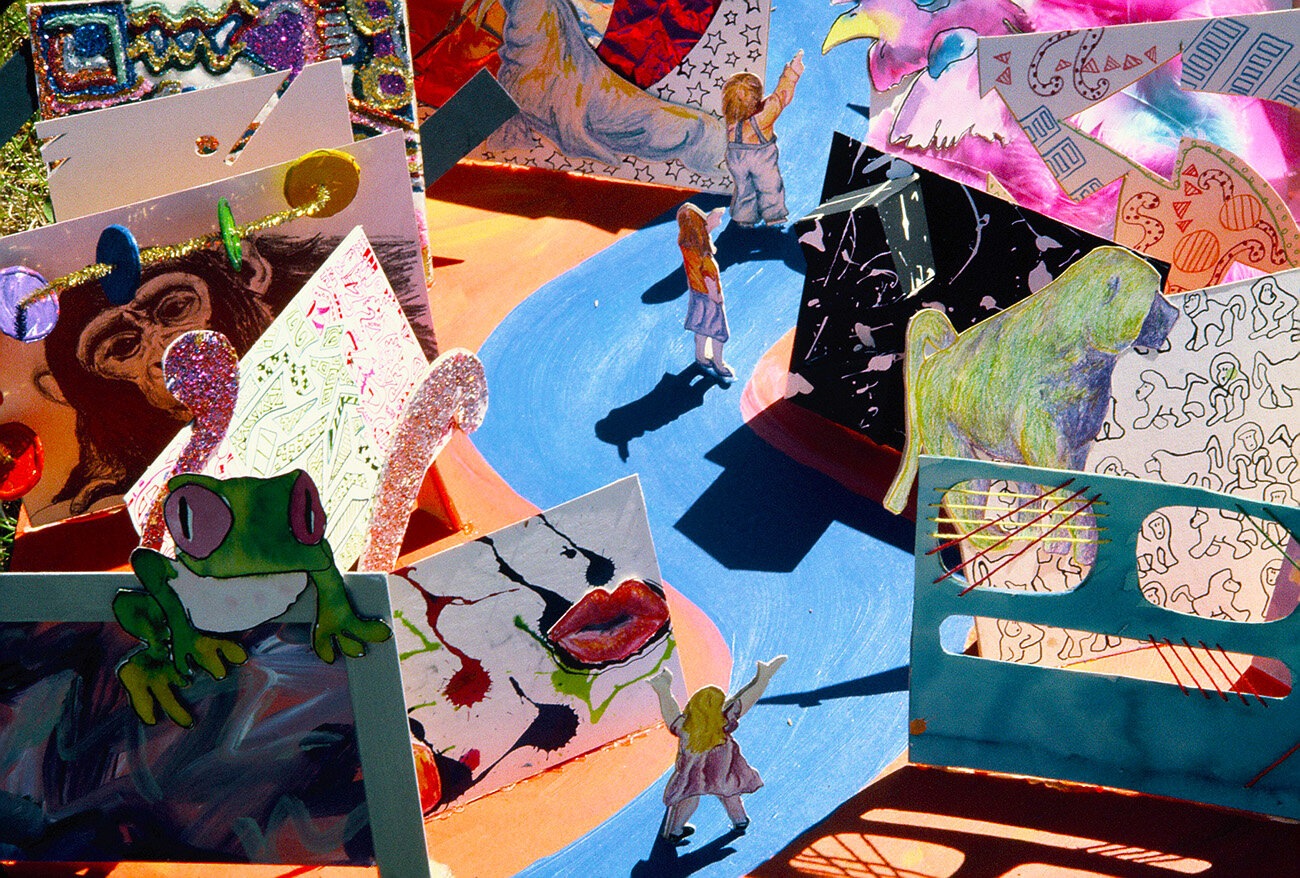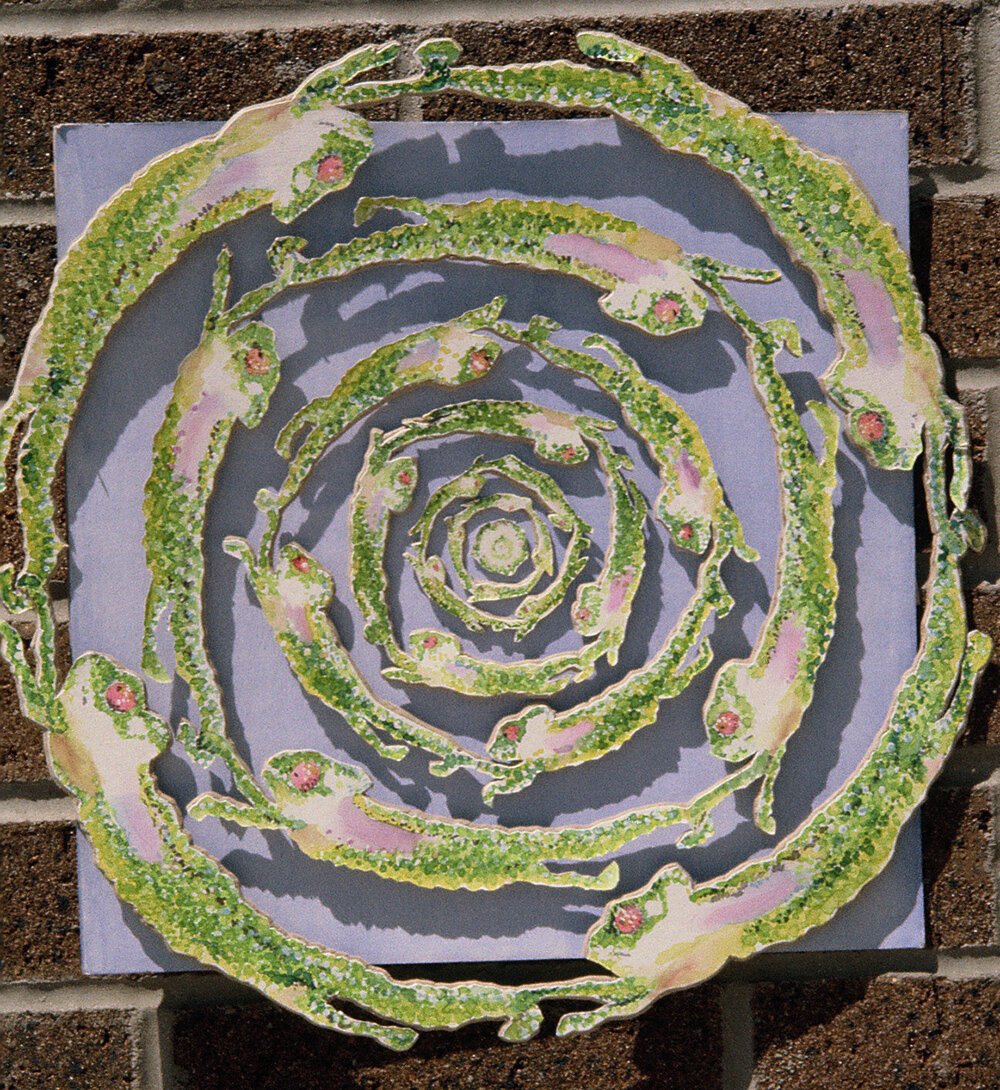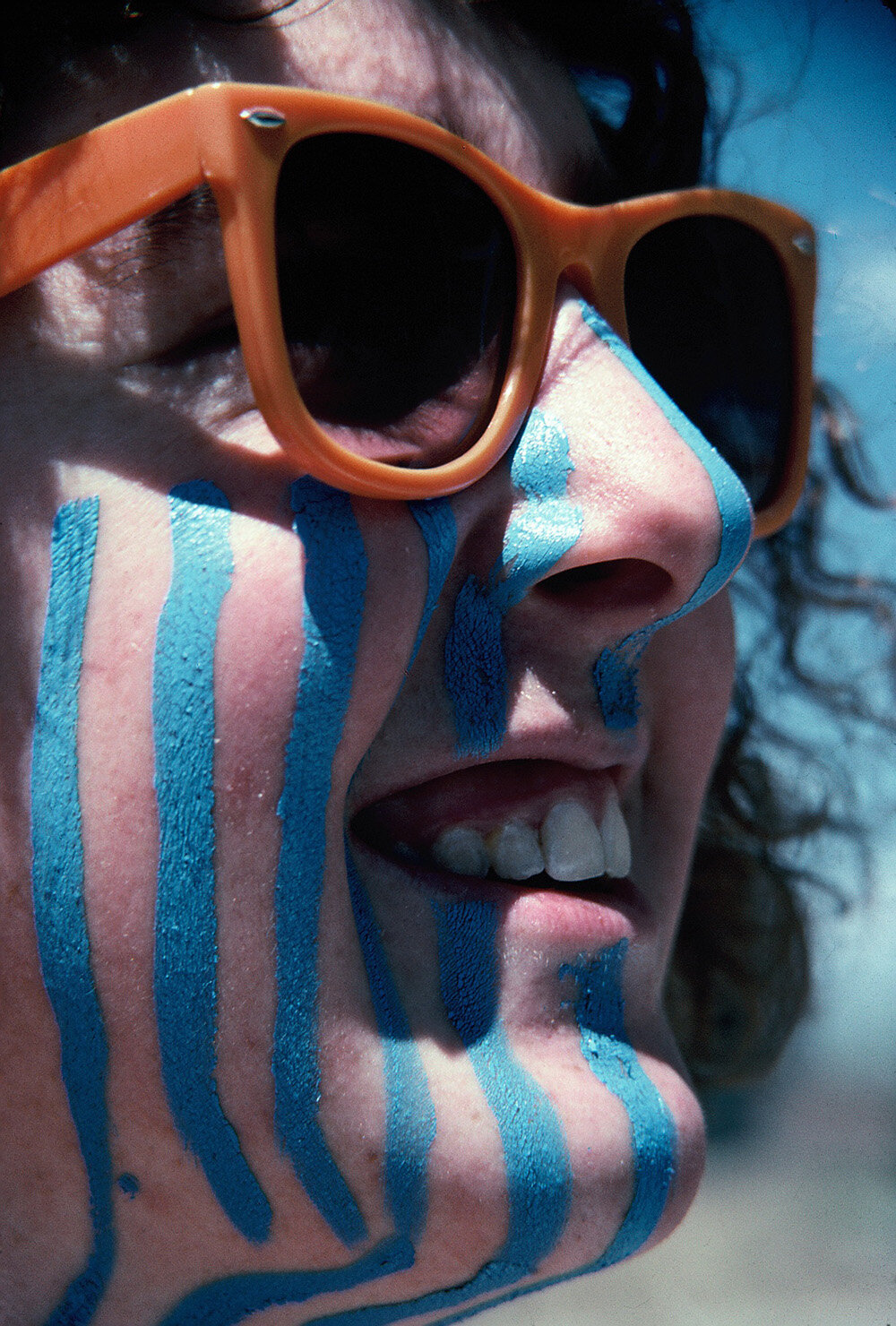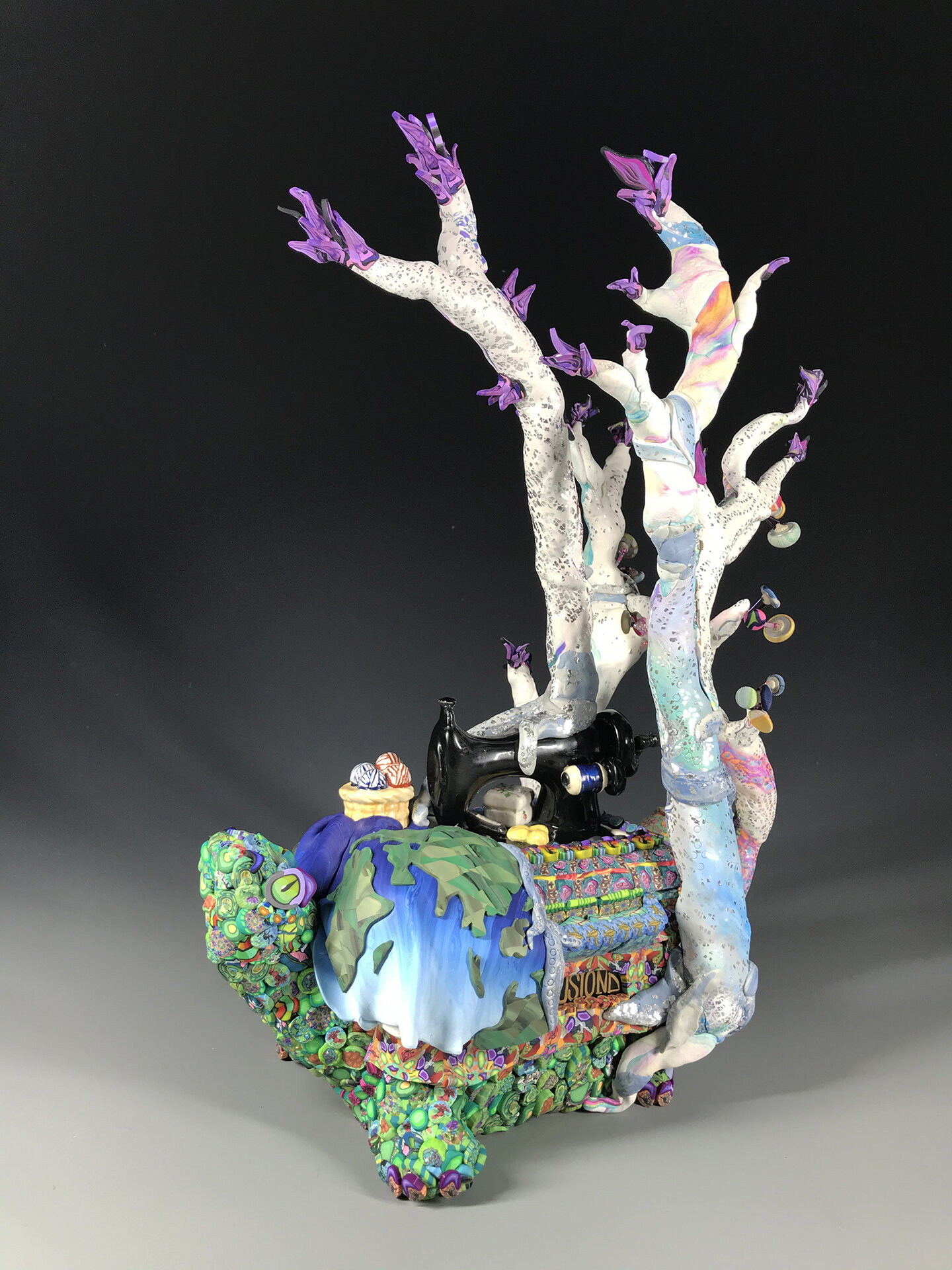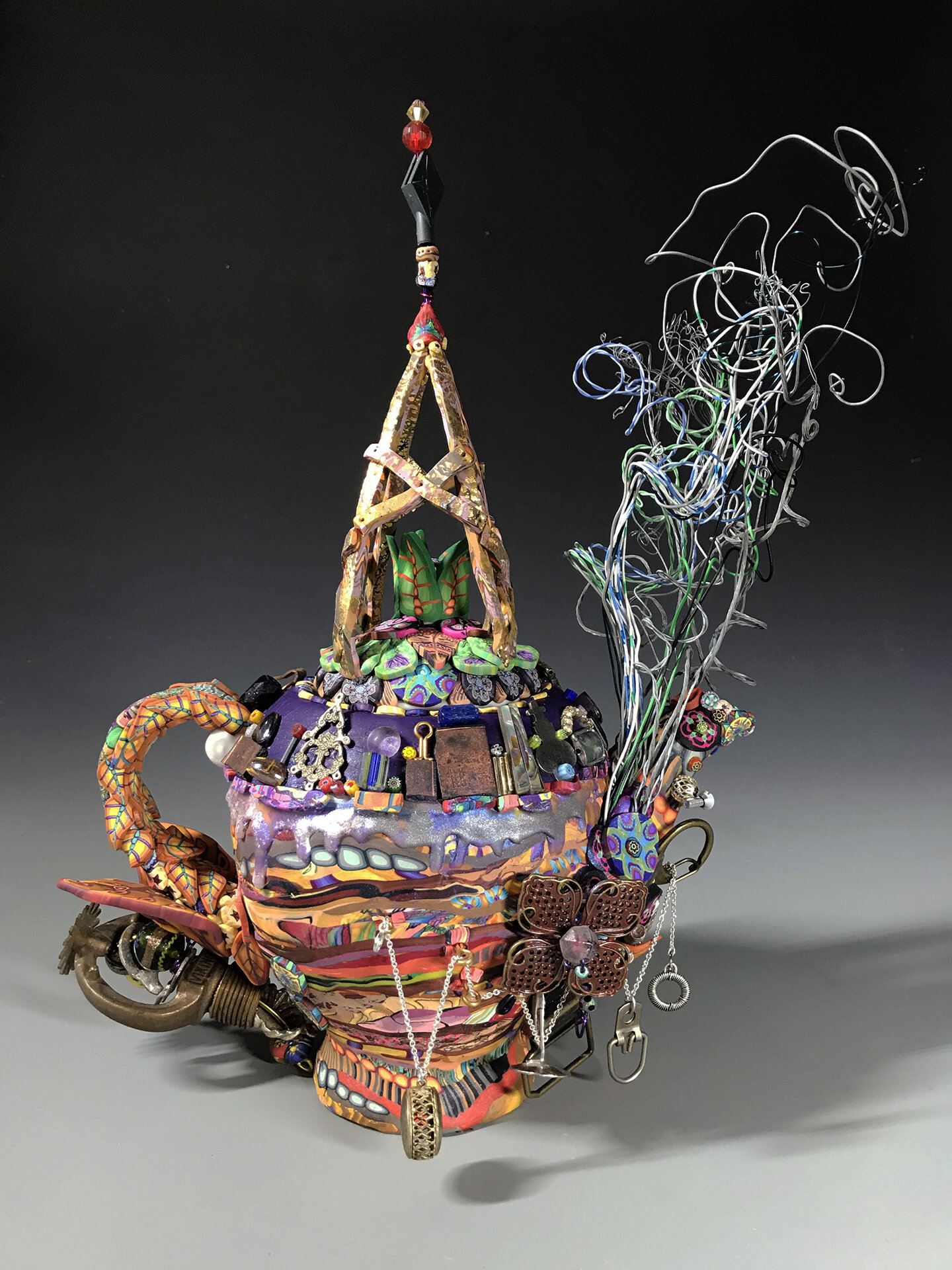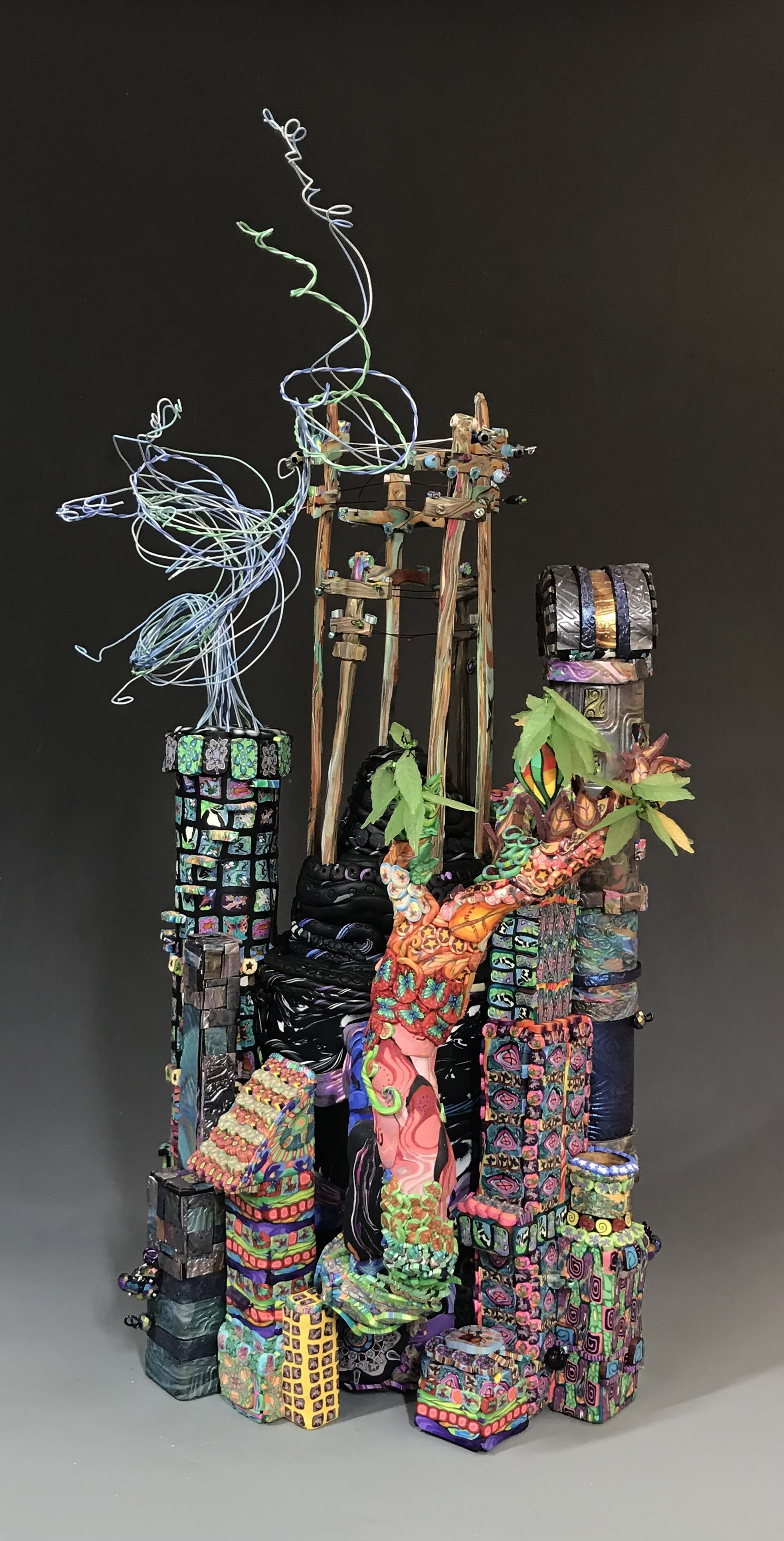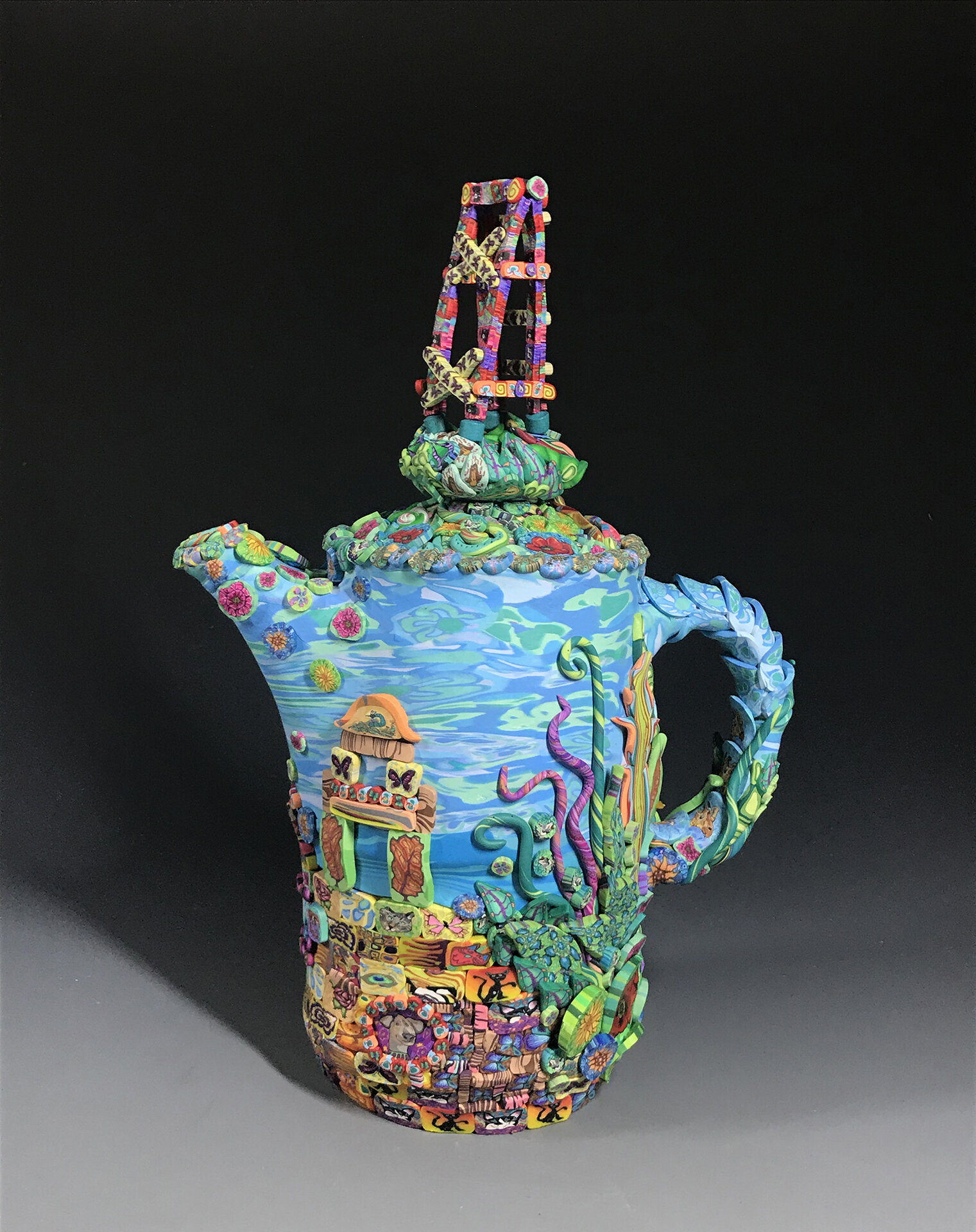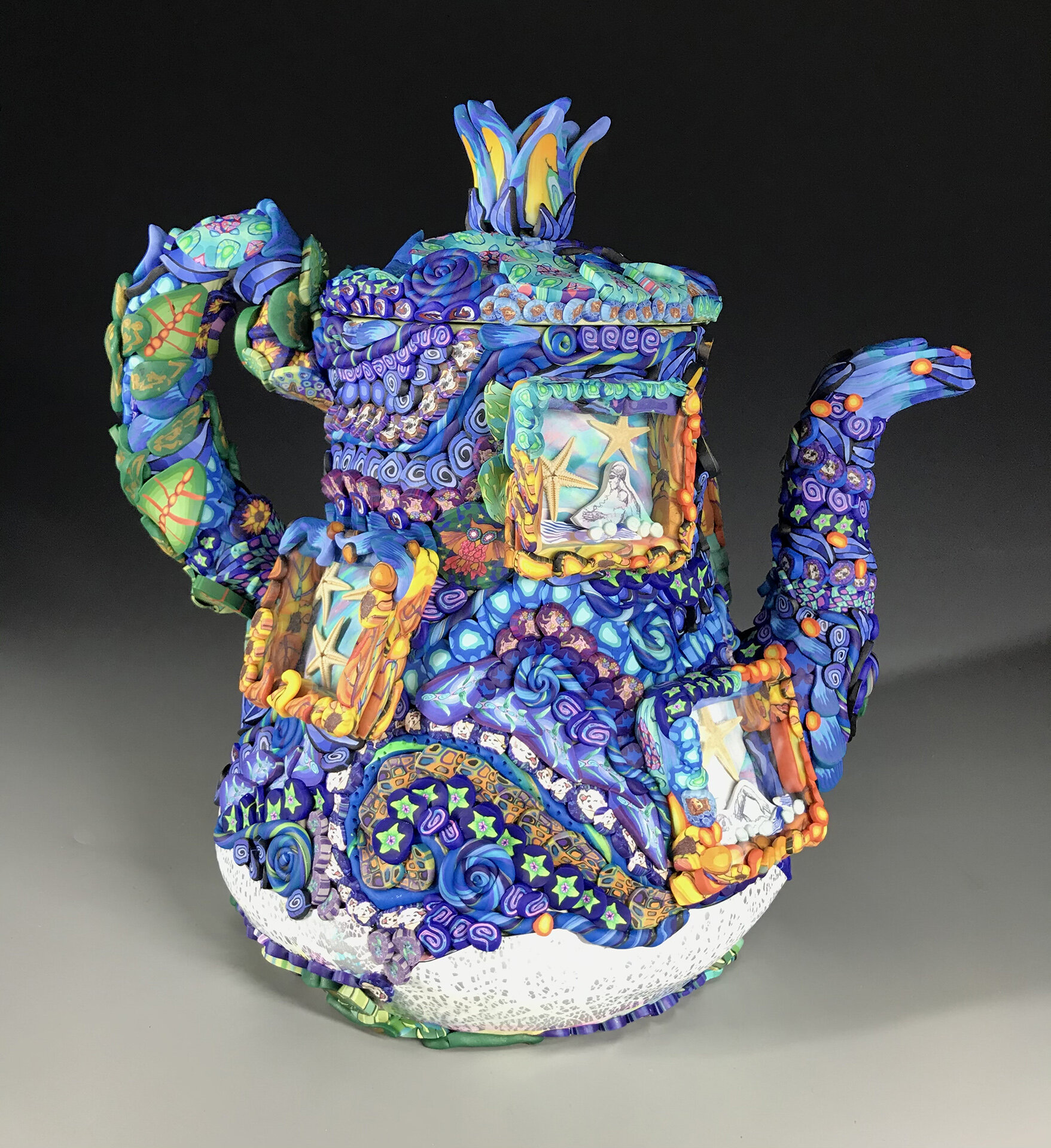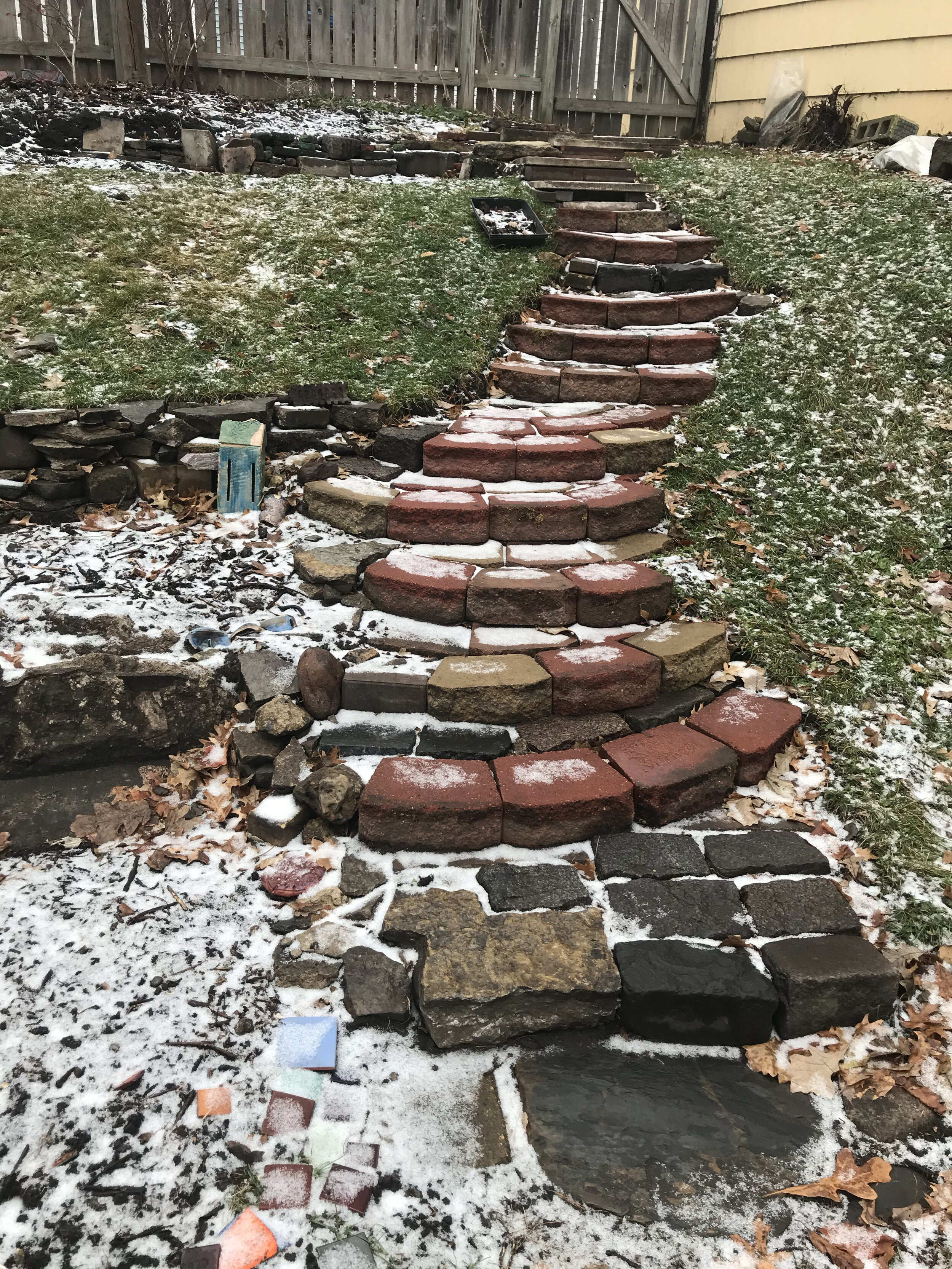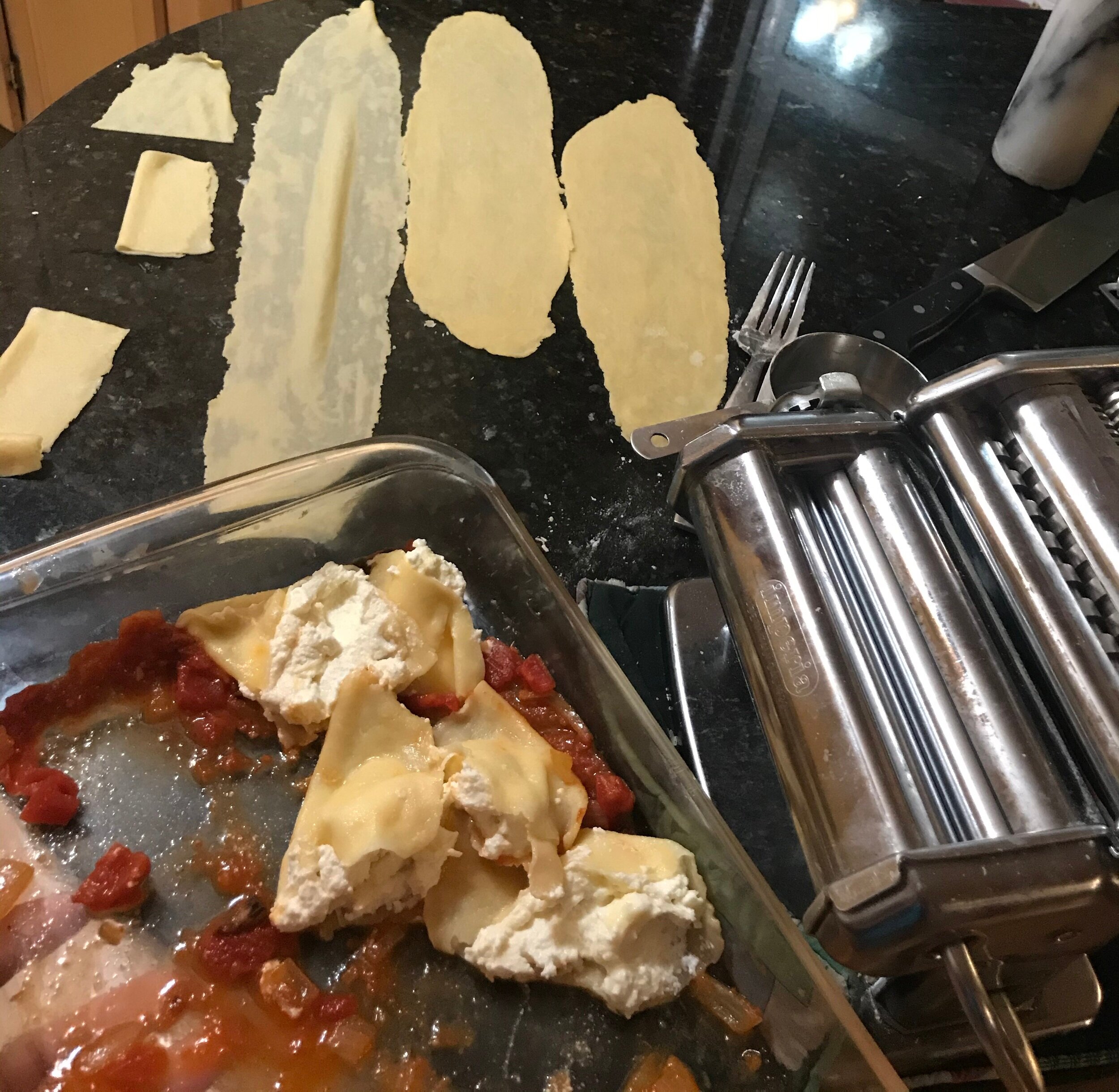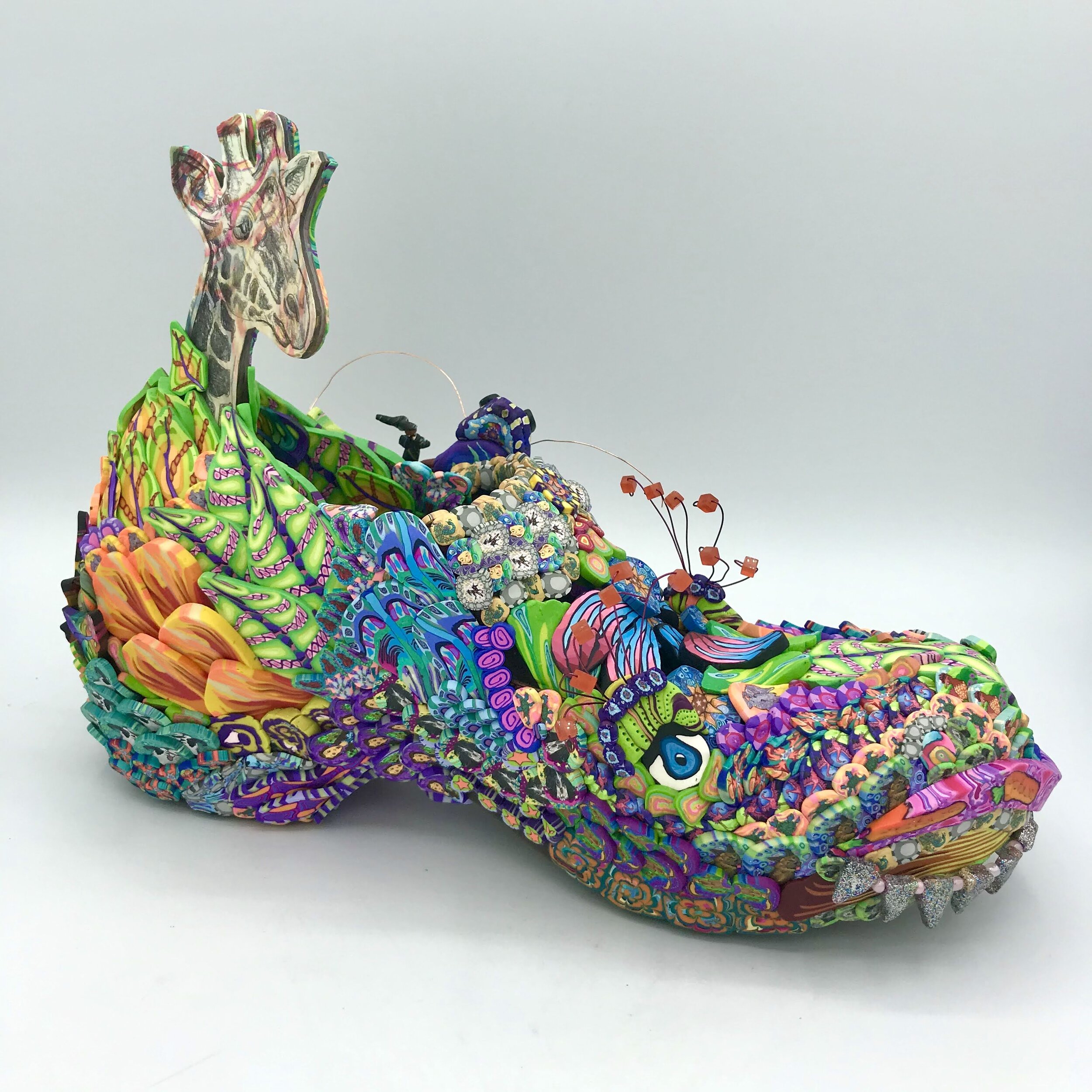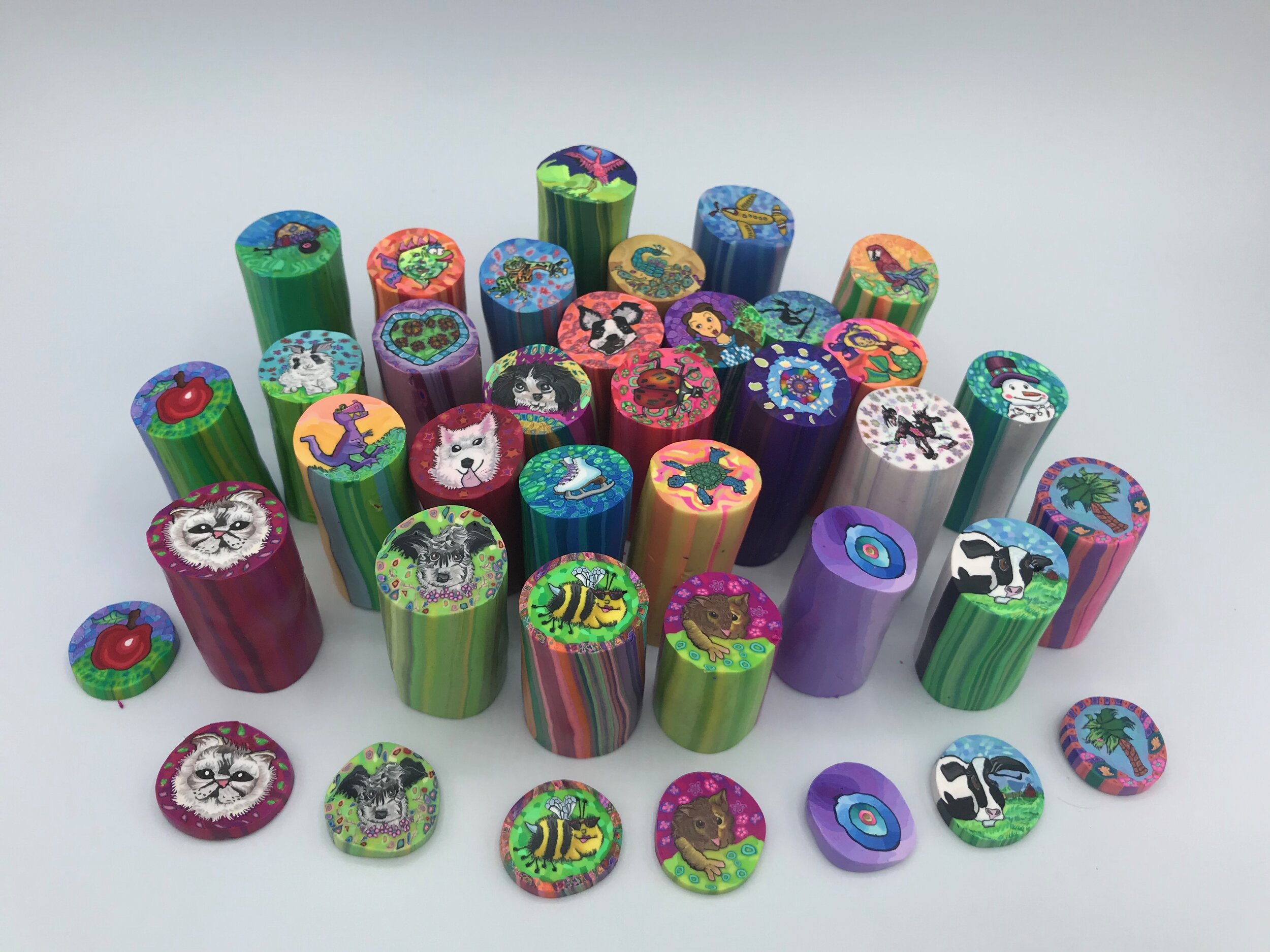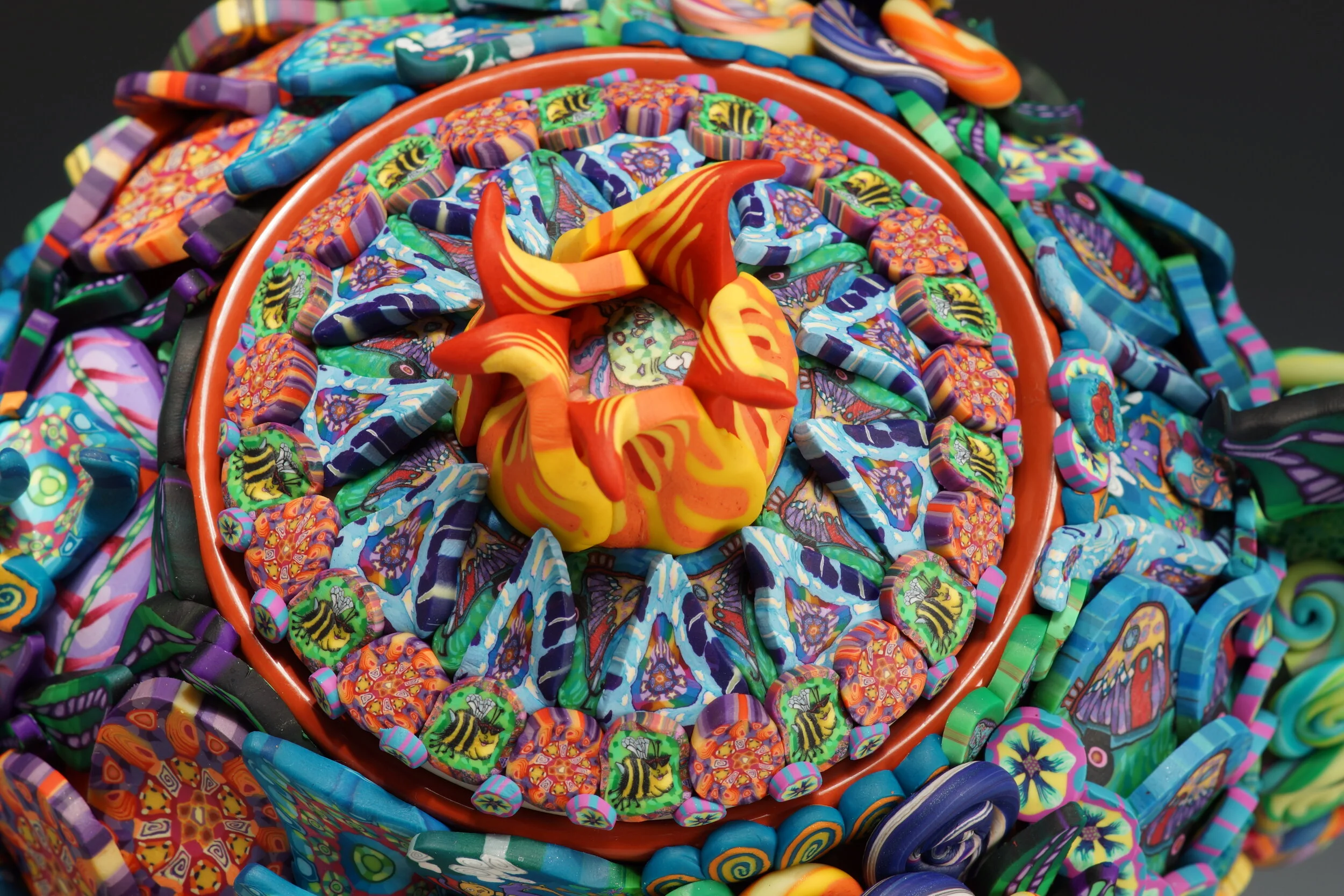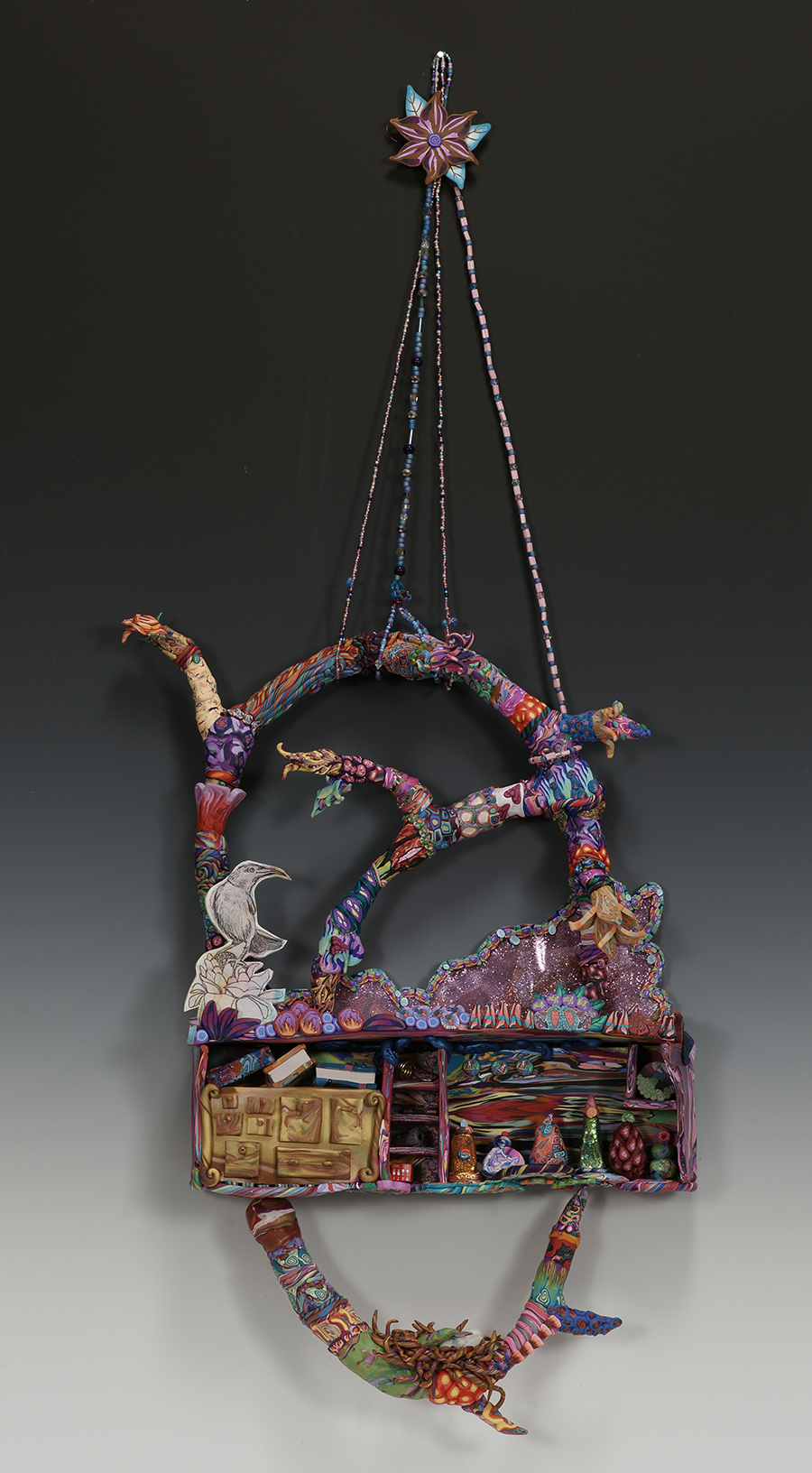My husband Josh and I have been traveling around Europe the last three weeks- Rome, Paris, Naples and Pompeii and we’ve seen a lot of ancient art as one does when they come to these parts of the world. Much of it is as old as 2000 years, some even older. All of the art has a long, varied story as it has gone through much in this world to survive and be viewed by us now.
This is a frieze I saw at the Cluny Museum in Paris - What is the story here? It kind of looks like someone didn’t like all the faces and chopped them out? Maybe it was a bad divorce?
It’s really made me think about all the different ways we treat and take care art over the ages. Do we repair it? Do we restore it to its original glory? Or do we just enjoy it- fading pigment, missing limbs and all?
There are so many sculptures with missing parts in the world but they can be beautiful as they are- I loved how they displayed this one with the stained glass parts in the background at the Cluny Museum - its kind of like the museum curator made a new piece of art!
It’s an interesting coincidence that right before I left on this trip I spent a few days in my studio working on repairing a couple of pieces of my own art. One was from a customer that bought the piece from me over 15 years ago and it had fallen from a high shelf and never even had a chance to be displayed. She finally brought it to me and I worked on repairing it. Amazingly it wasn’t that bad but there is one crack on the foot that we are still searching for a solution on. I might add another dog - then the piece will have evolved a bit away from its original form but I think since I am the artist (though changed some over the past fifteen years) that’s probably just fine. If someone else 100 years from now decided to add a dog to it- well that just wouldn’t seem right- OR maybe it’s okay- does it really matter as long as the piece is aesthetically pleasing to the owner/viewer?
Luckily most of the parts were still here since all the canes are long gone!
The other piece I was fixing was a piece I made in 2011- "Ape's Potion House". This piece sadly had a bad relationship with a command strip at an exhibit and fell with a loud crash. Once again considering its fall it was in pretty good shape but as I pieced it back together one section was especially hard to figure out so I am pretty sure I didn't put it back exactly as it was. AND the poor little Ape has a missing limb. Now that I have seen so many ancient sculptures with missing limbs maybe I will just leave it that way- it does start to become part of the piece's story and its evolution.
This is the piece in its original glory but it looks a bit different now that it has had a few adventures!
As we have traveled I've seen many interesting stories about art work being restored back to it's former glory. At one church, Santa Chiara in Naples, there was a terrible fire when it was bombed during WWII. Sadly much of the artifacts were wrapped in hay and fabrics in order to protect it in case of a bomb but when the church caught on fire these materials were highly flammable. Still they were able to painstakingly repair the collection of incredible figurative reliquaries back to their former glory. What a story!
One of many beautifully restored reliquaries at the Santa Chiara Monastery . I do like that it still has an “antiqued look” maybe that is because even after it was restored it’s been about 80 years.
Then there were the many marble sculptures found in Pompeii. These of course have one of the most amazing stories ever having been buried under ash from the volcanic explosion of Mt. Vesuvius in 79 AD. At the National Archeology Museum in Naples they have a huge collection of these sculptures and interestingly many of them had their missing parts replaced with new marble parts- even their whole head! As you looked you wondered how they knew how to make all the replacements so perfectly.
It sure looks like they put a new head and arms on this sculpture doesn’t it. A lot of the pieces in the National Archeology Museum in Naples actually had descriptions laying out which parts were replacements.
I never did find out if any of these sculptures would have been painted but I know a lot of marble sculptures from antiquity would have been fully and brightly painted. At the Cluny Museum in Paris we saw a lof of pieces that had remnants of paint. I have never seen one of these sculptures fully re-painted to its former glory- or gaudiness. I feel like we are so used to seeing these sculptures without paint and we would NOT find a fully painted sculpture to be very aesthetically pleasing!
You can see a lot of remaining paint on this piece from the Cluny Museum in Paris but if you look closely when you go to museums you might see just the tiniest fragments. Sometimes they will even have an image displayed with the piece that shows what colors it was originally but most of the time there is no mention of the previous color.
I think a lot of times we imagine that having art at perfectly preserved in its original glory is the goal but we are also very drawn to the look of aged artifacts. Just walking around Pompeii and Herculaneum I definitely agree that seeing all the textures and layers of stones is way more interesting than the perfectly covered stucco walls were when originally built 2000 years ago. If anyone ever proposed putting Pompeii back to what it was I think there would be a revolt. In Egypt they wanted to put marble "back on '' one of the pyramids and there was huge disagreement.
Then again we have to try to keep the art and artifacts as "healthy" as possible. At the Museo e Real Bosco di Capodimonte there were patches of rice paper on the paintings to help hold the paint onto the wood panels because wood is a living surface and expanding and contrasting over time. (something I've dealt with myself with my clay- I even re-made a piece because of this problem).
I hope eventually they will be able to remove the patches but I get why they have to put them there. Wood is a very challenging substrate!
It's all fascinating to think about this constant balance. I am sure that archeologists and art gallery curators deal with this all the time. As an artist we also deal with it. Especially if you have pieces over a long period of time and it gets brought to many different exhibits. I am lucky that my medium is fairly strong- it's not going to completely shatter like ceramics and glass but then again ceramics and glass were two things that we saw a lot of- I can't believe how these delicate creations lasted over 2000 years!
Amazing glass vessels from Pompeii! How did these delicate objects survive! I never did find out what they were used for- any guesses?
By the way I do tell all my customers that I will repair any pieces that need fixed at any time- I feel like this is the best way to know that my work is out and being enjoyed not sequestered away until it is dug up one thousand years from now!
And one thing about what I make is there are so many little parts - if a few go missing you probably won’t even be able to tell. And if you can- well that’s the evolution of the piece.









